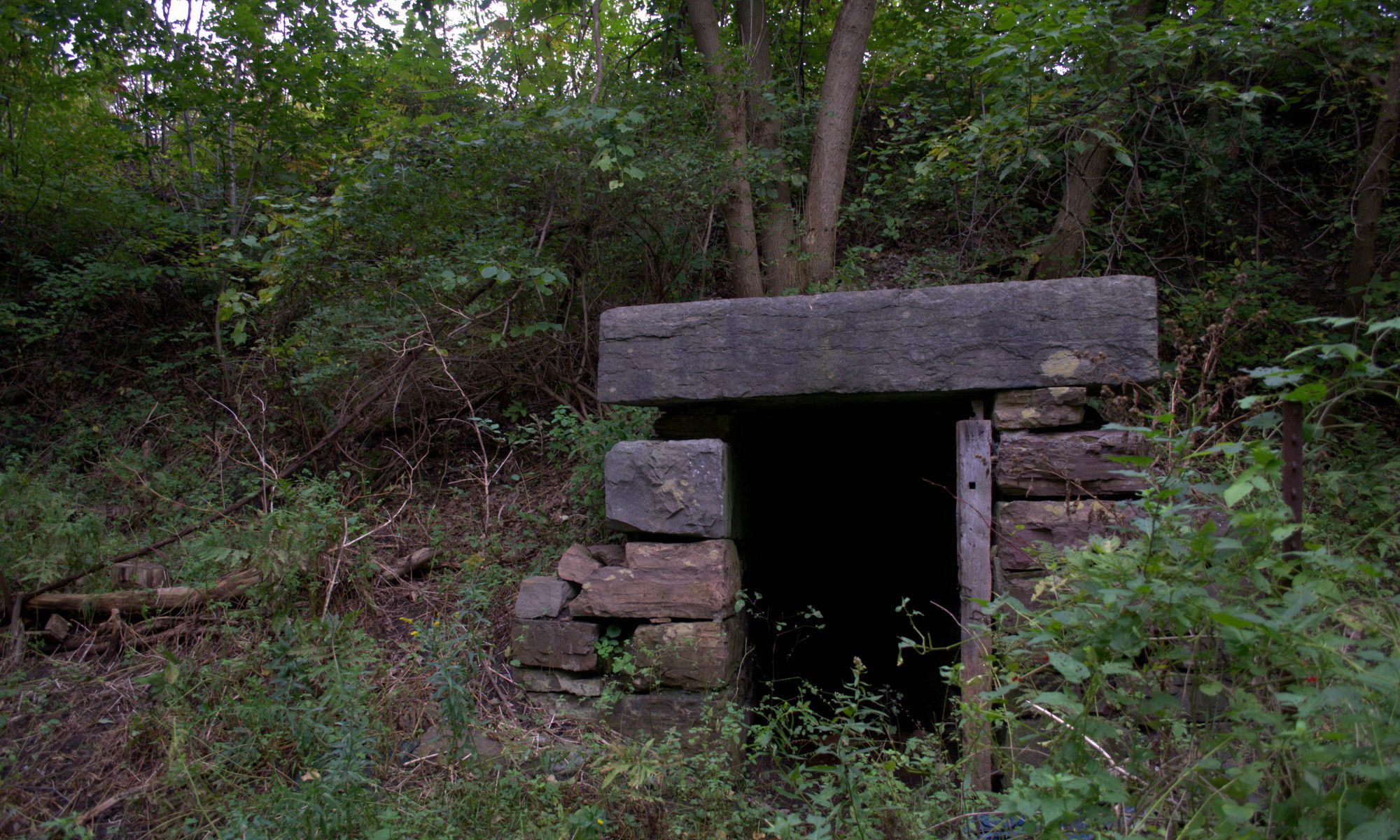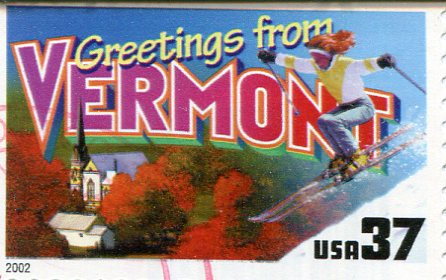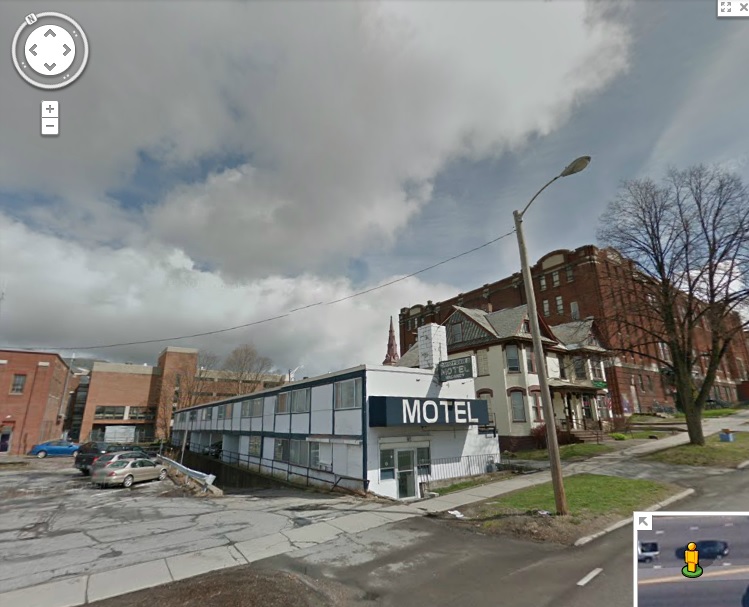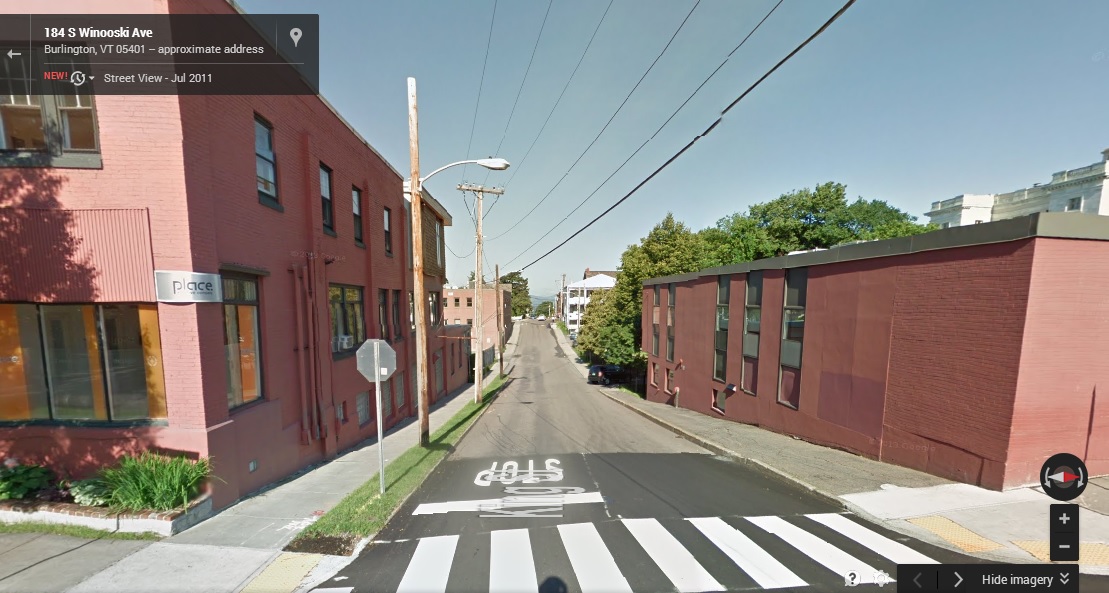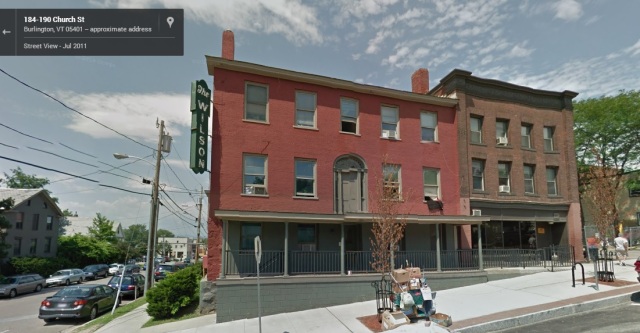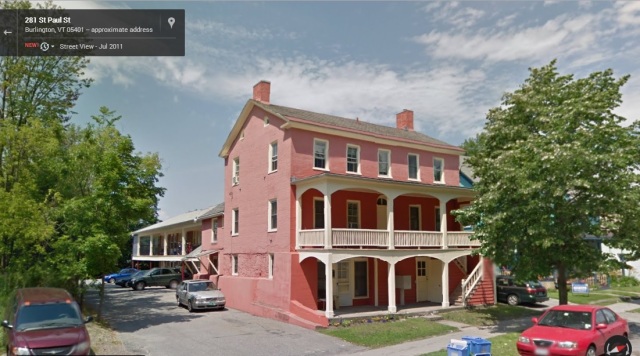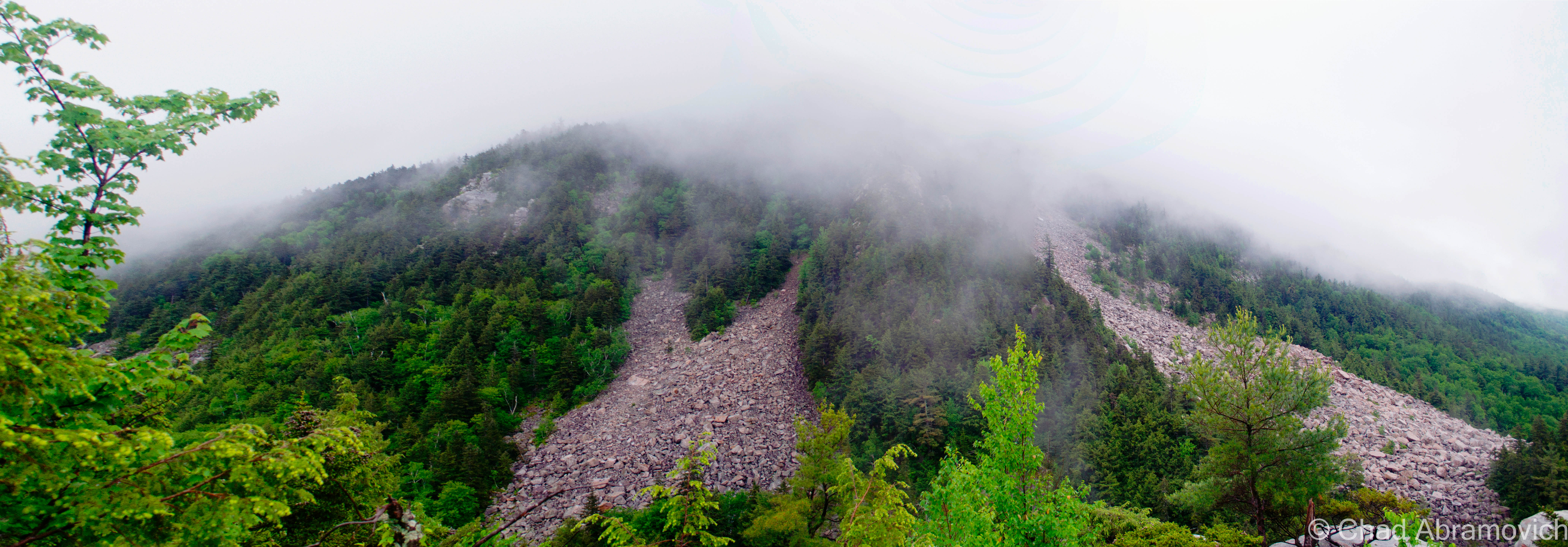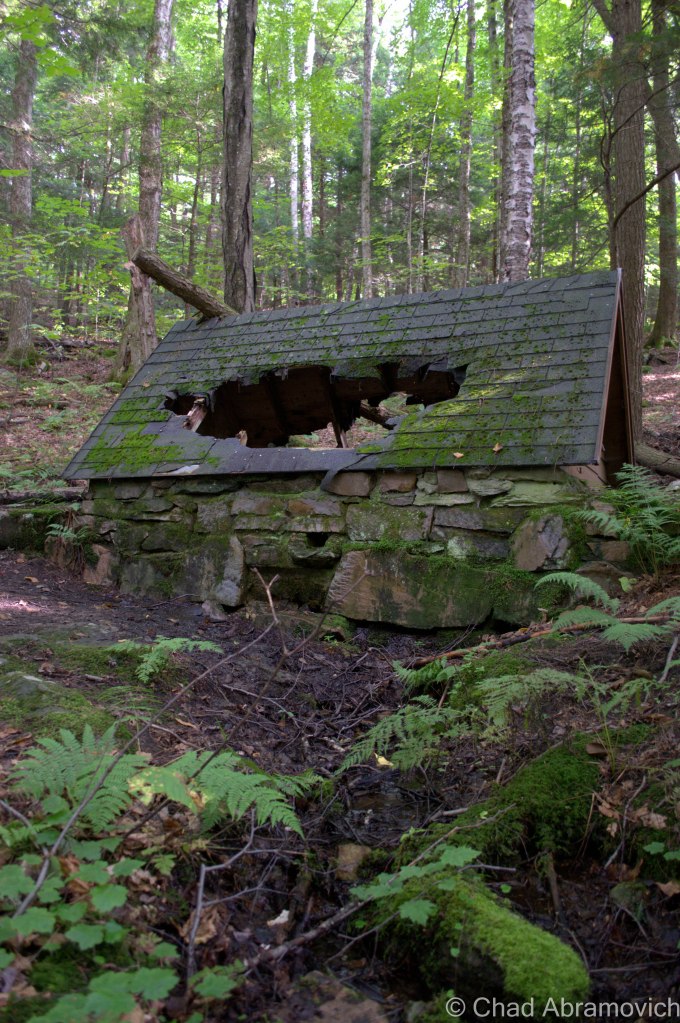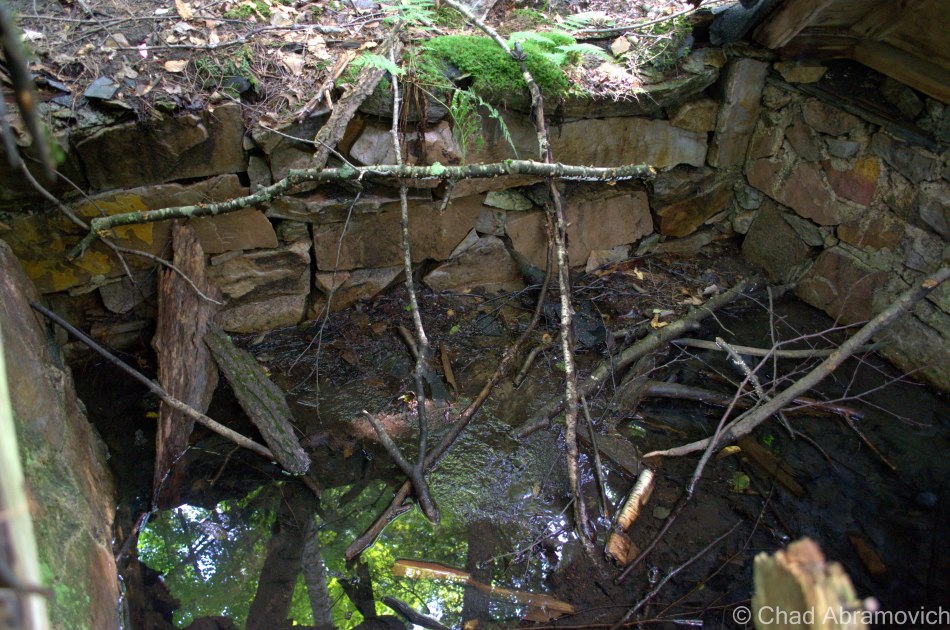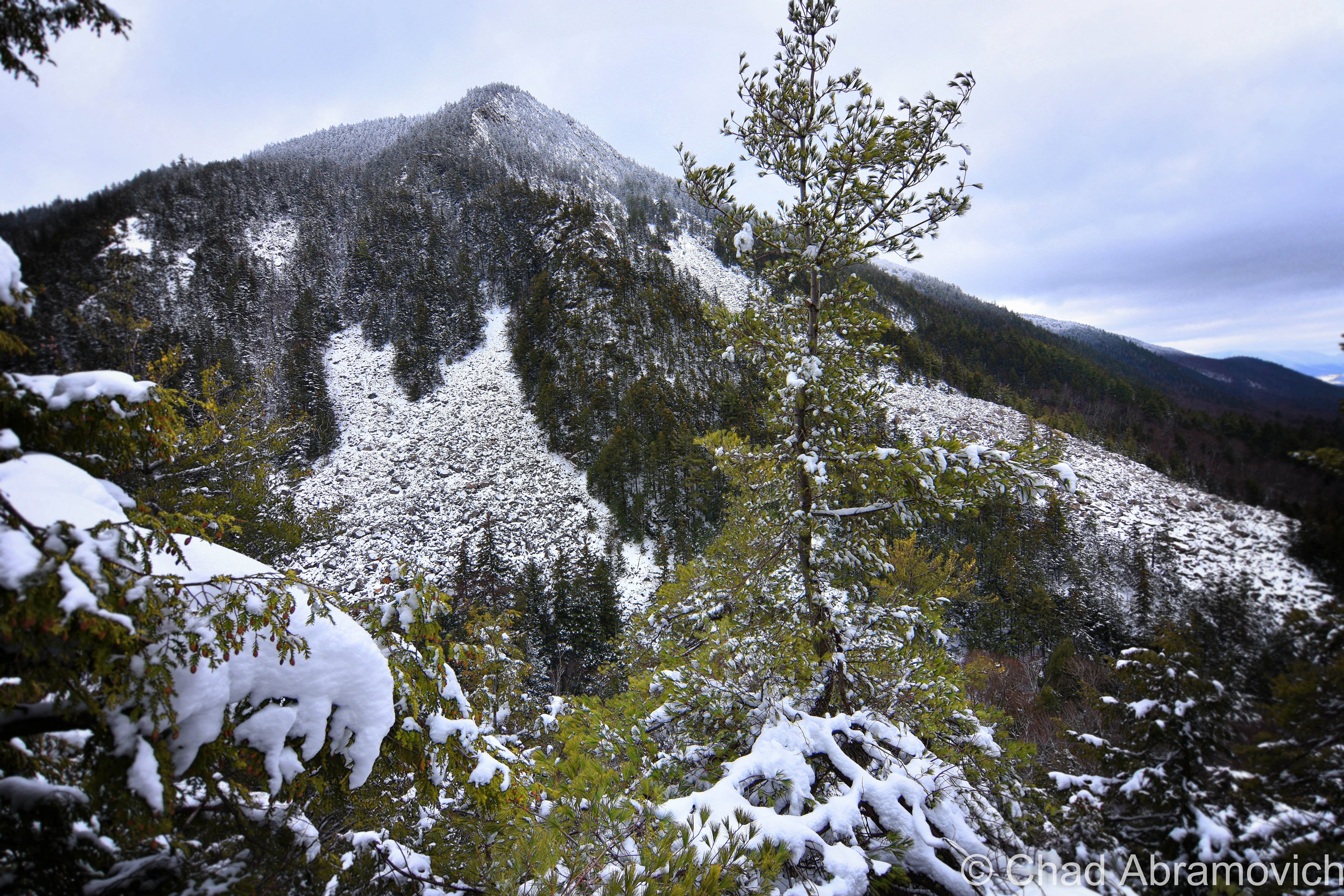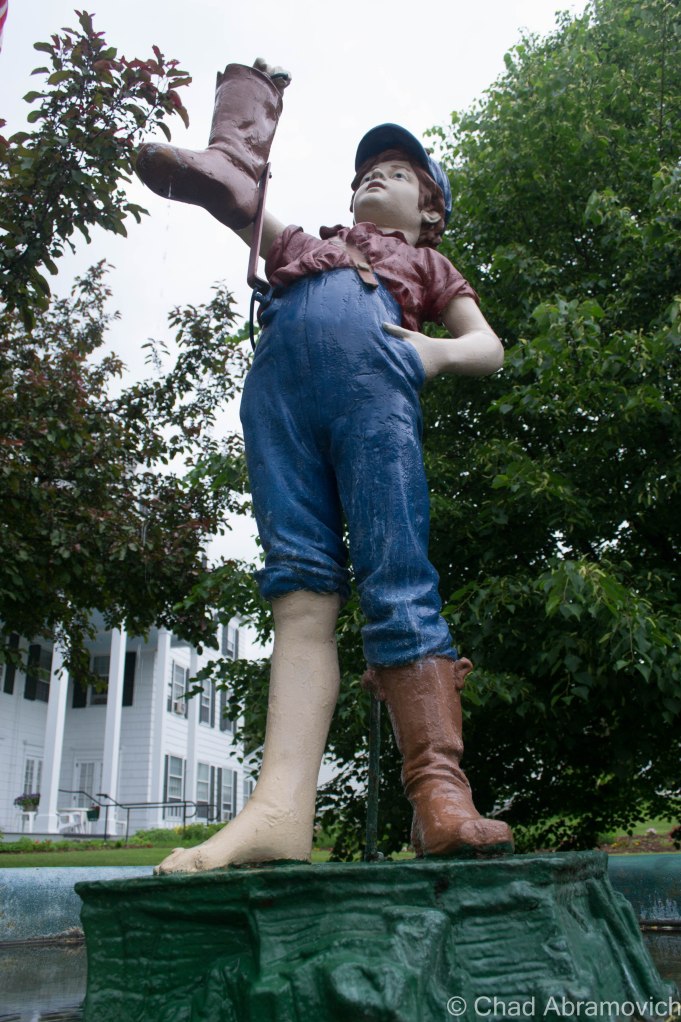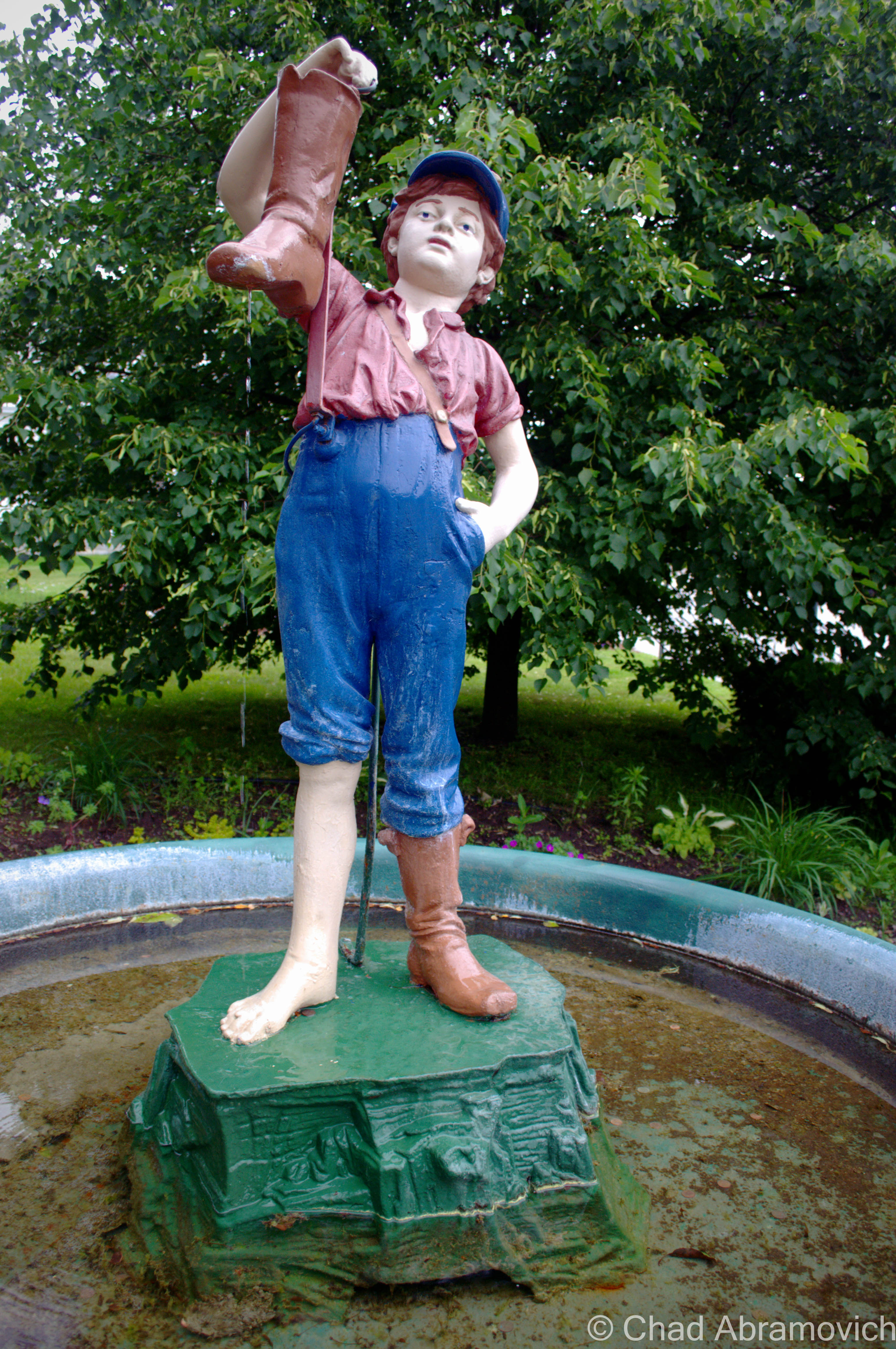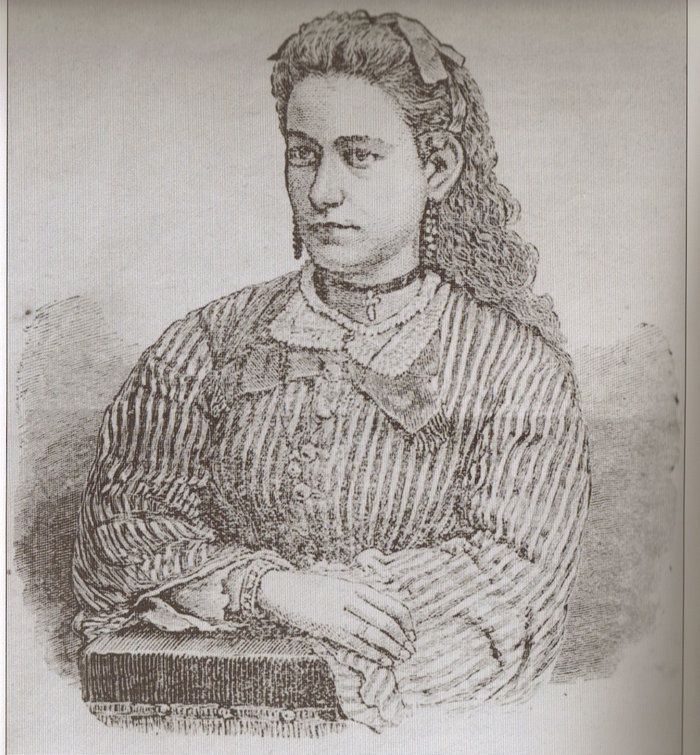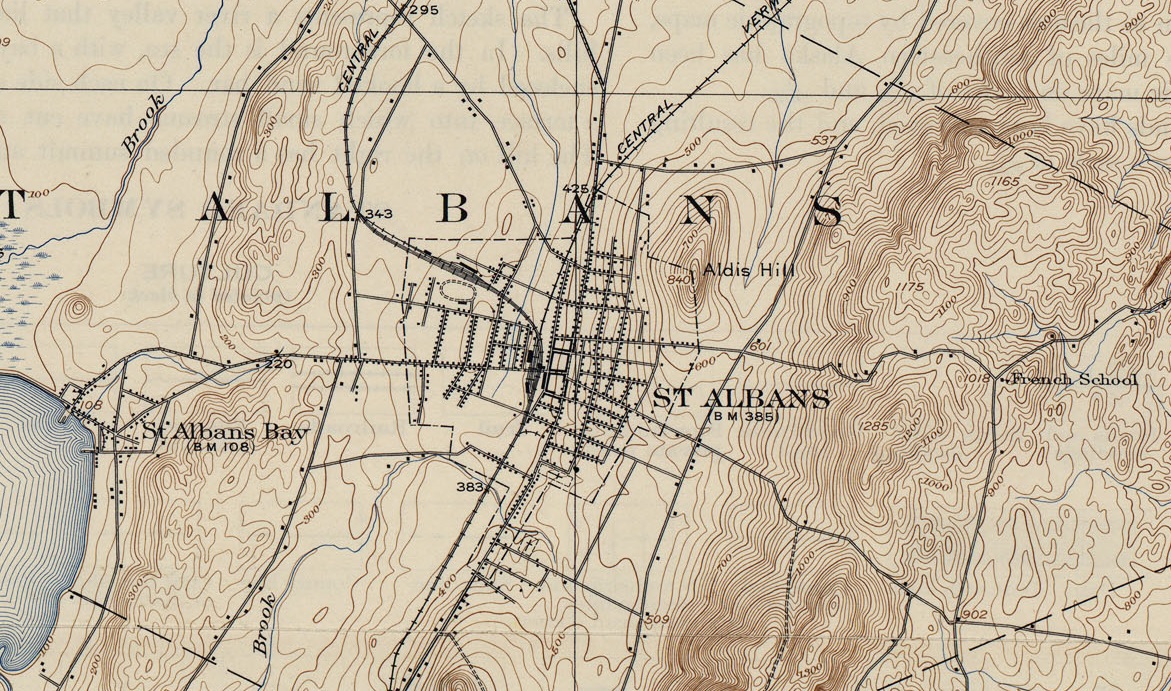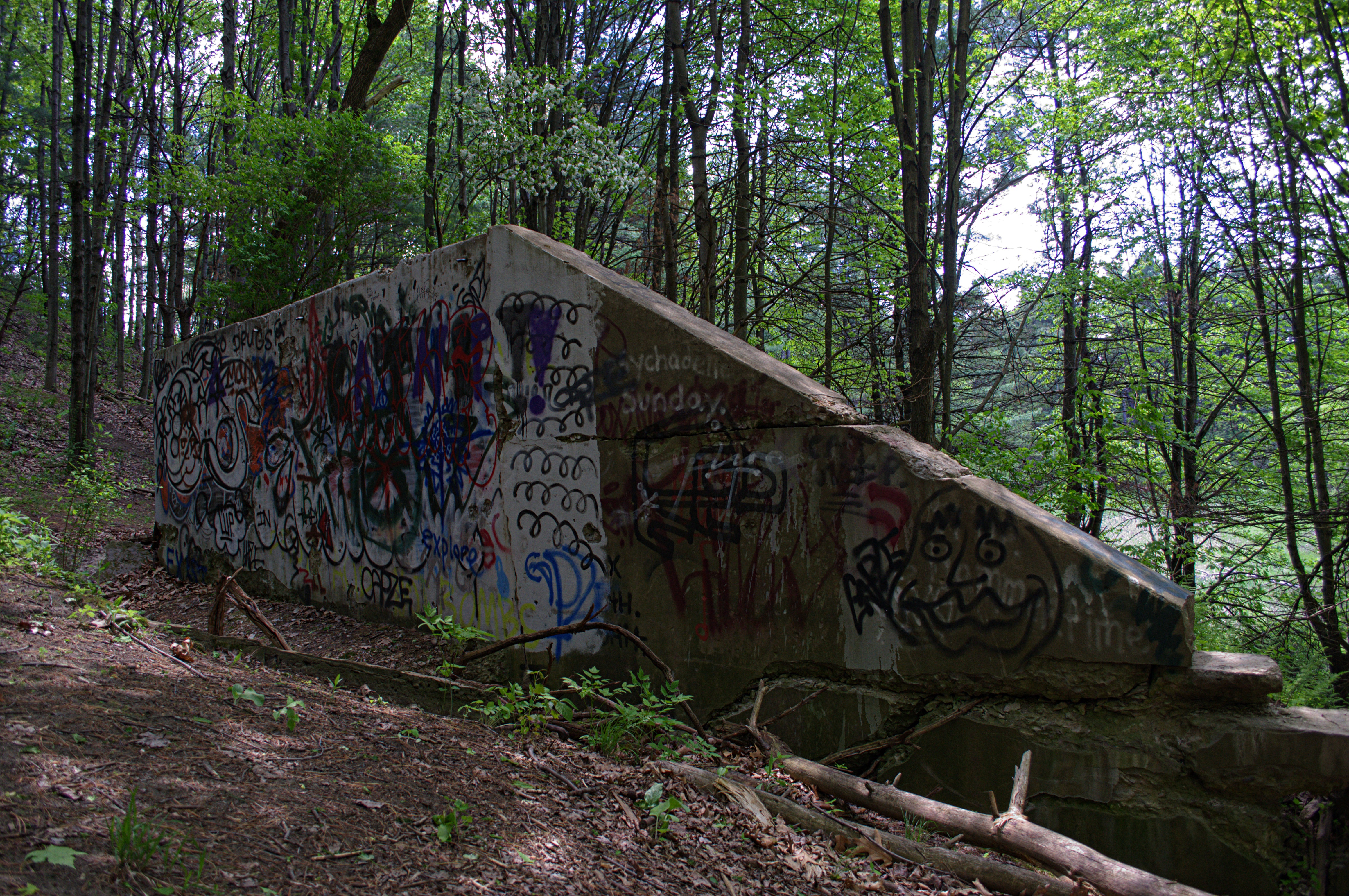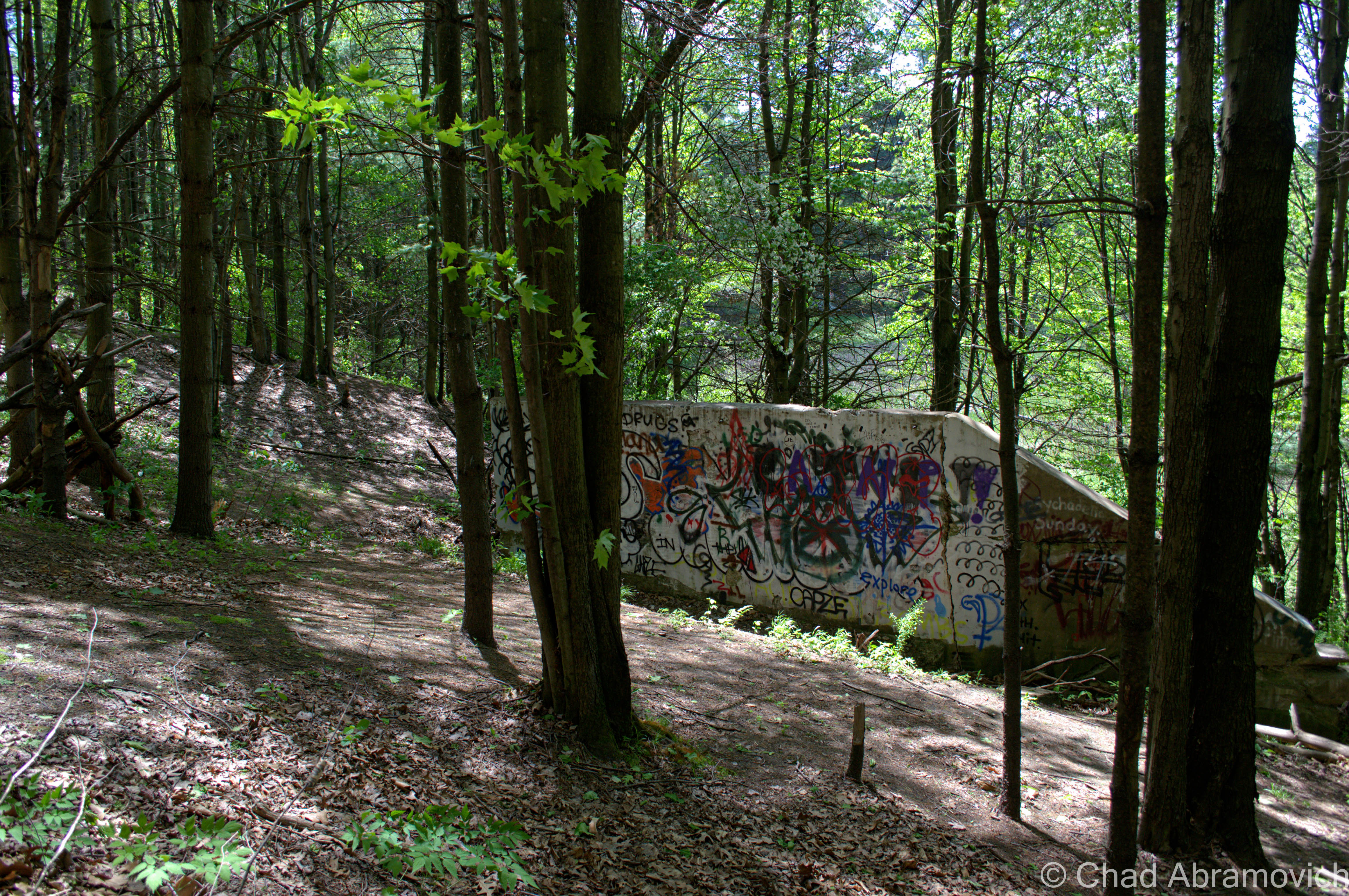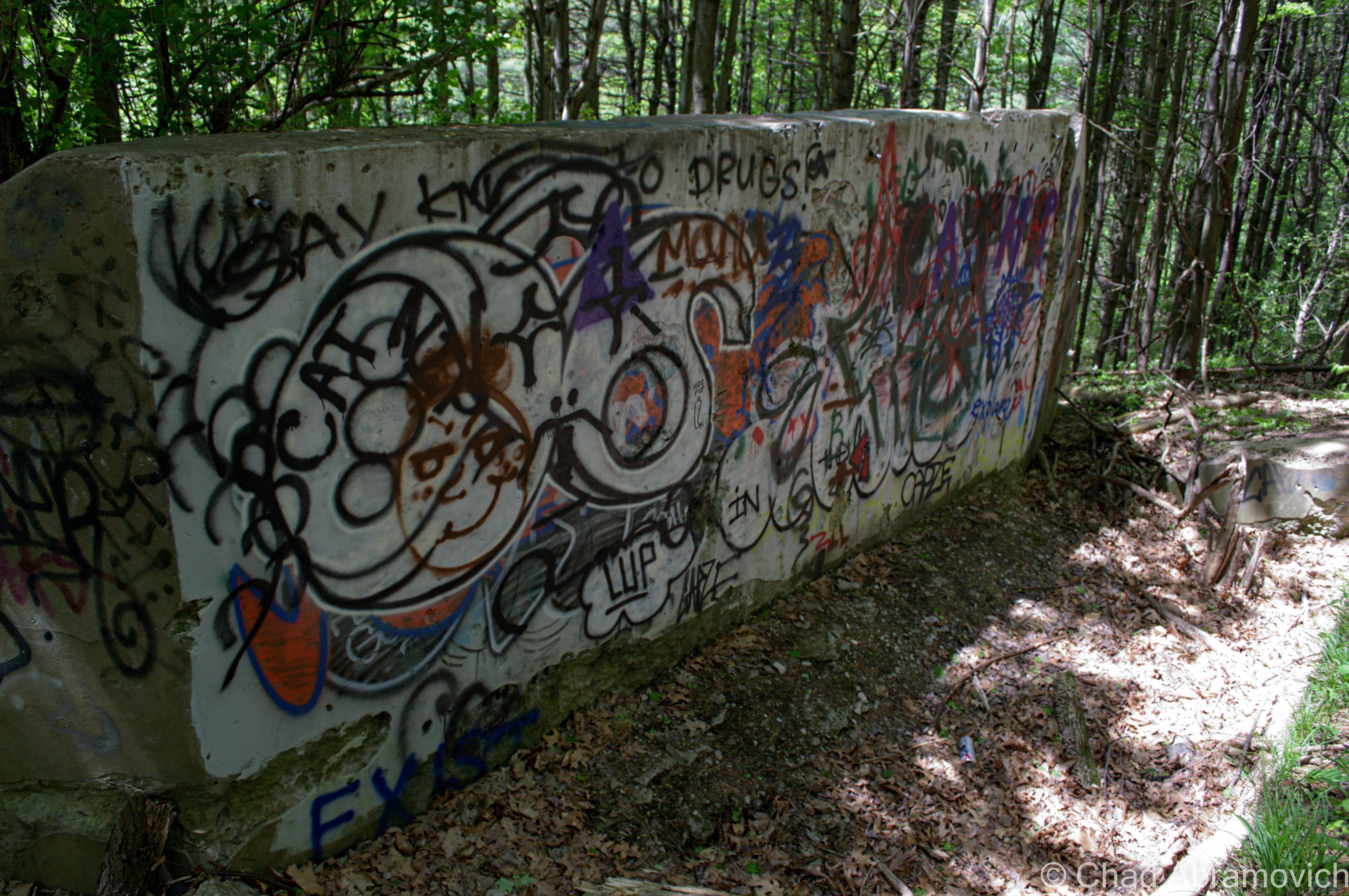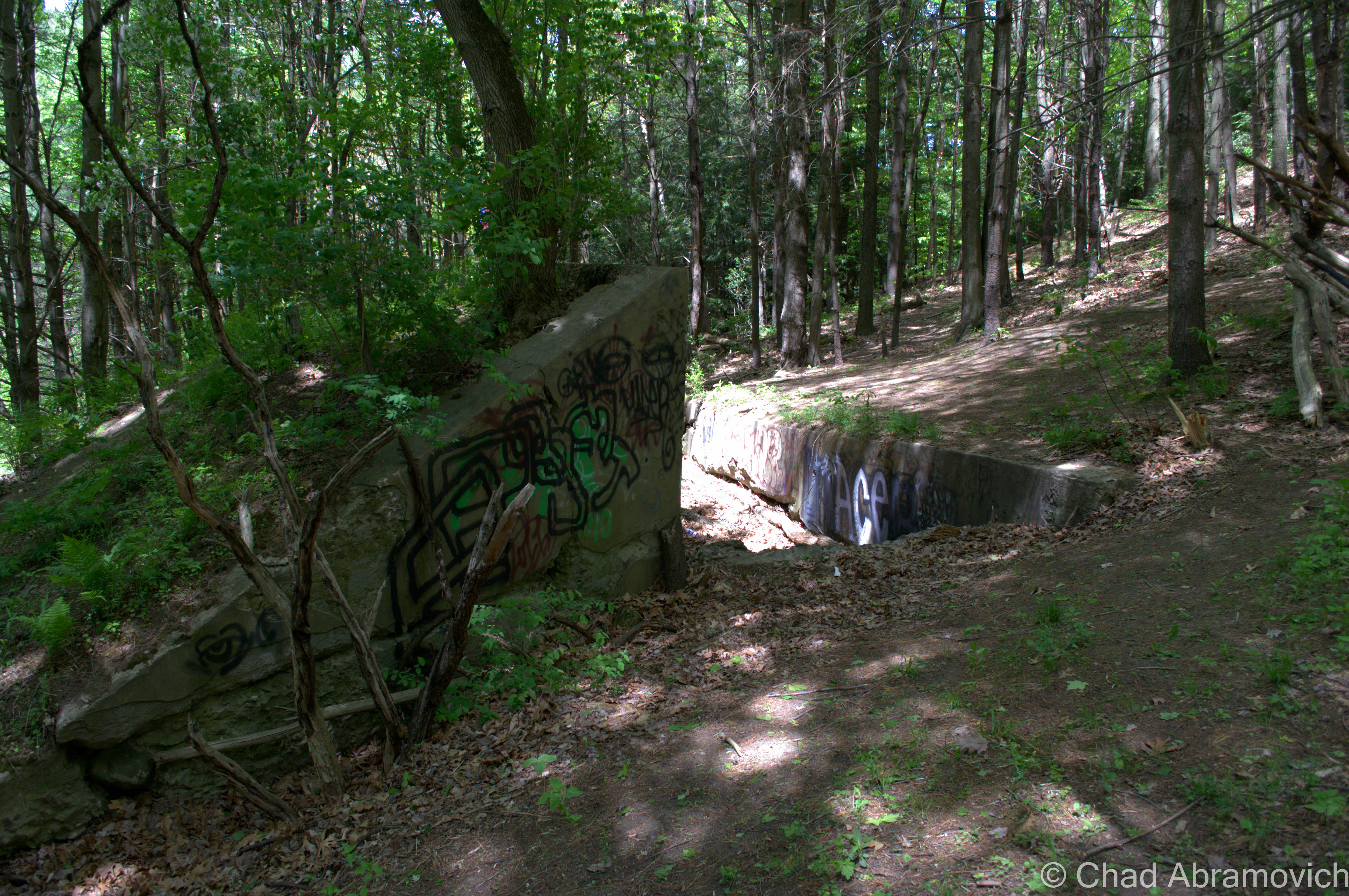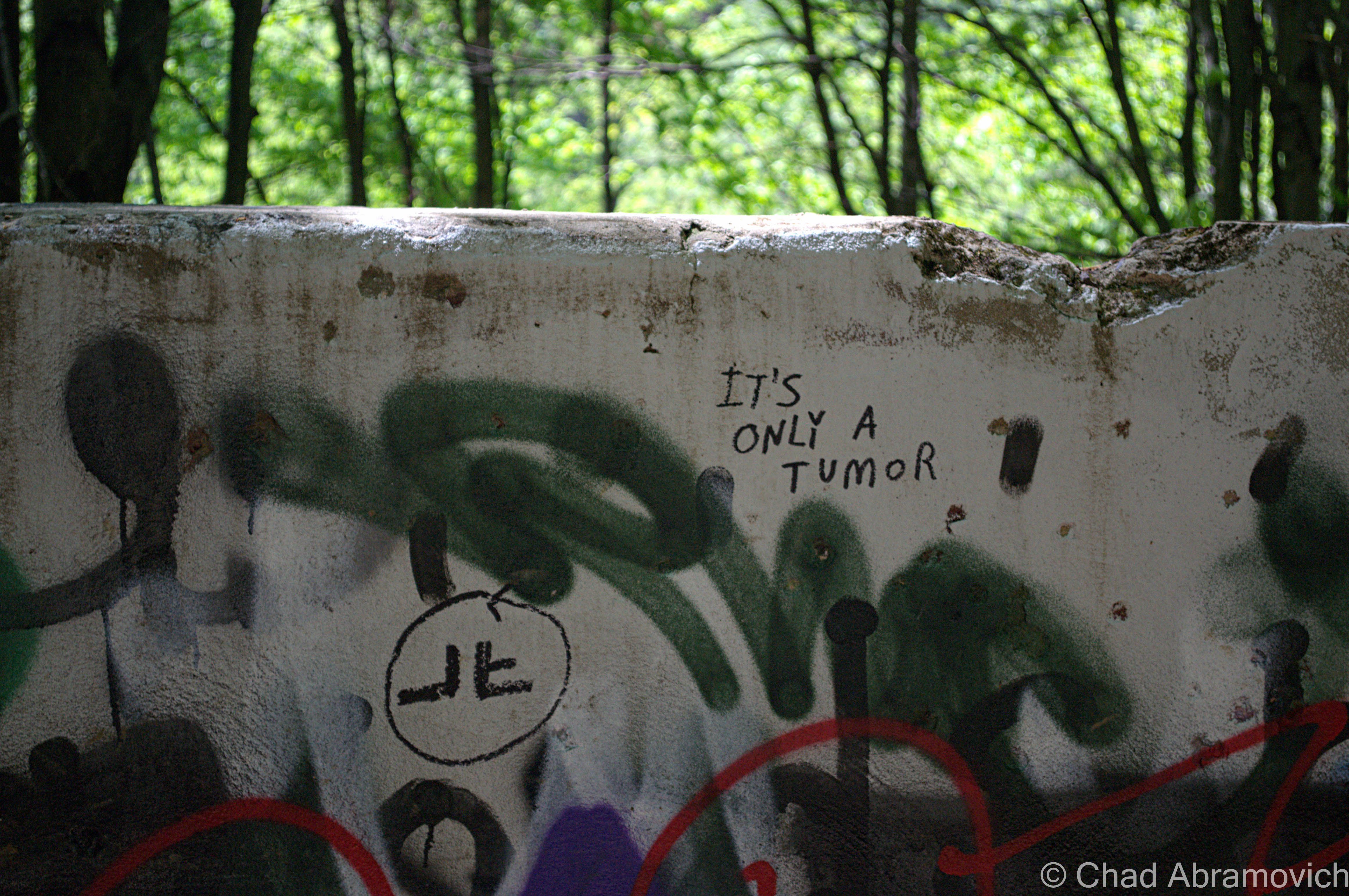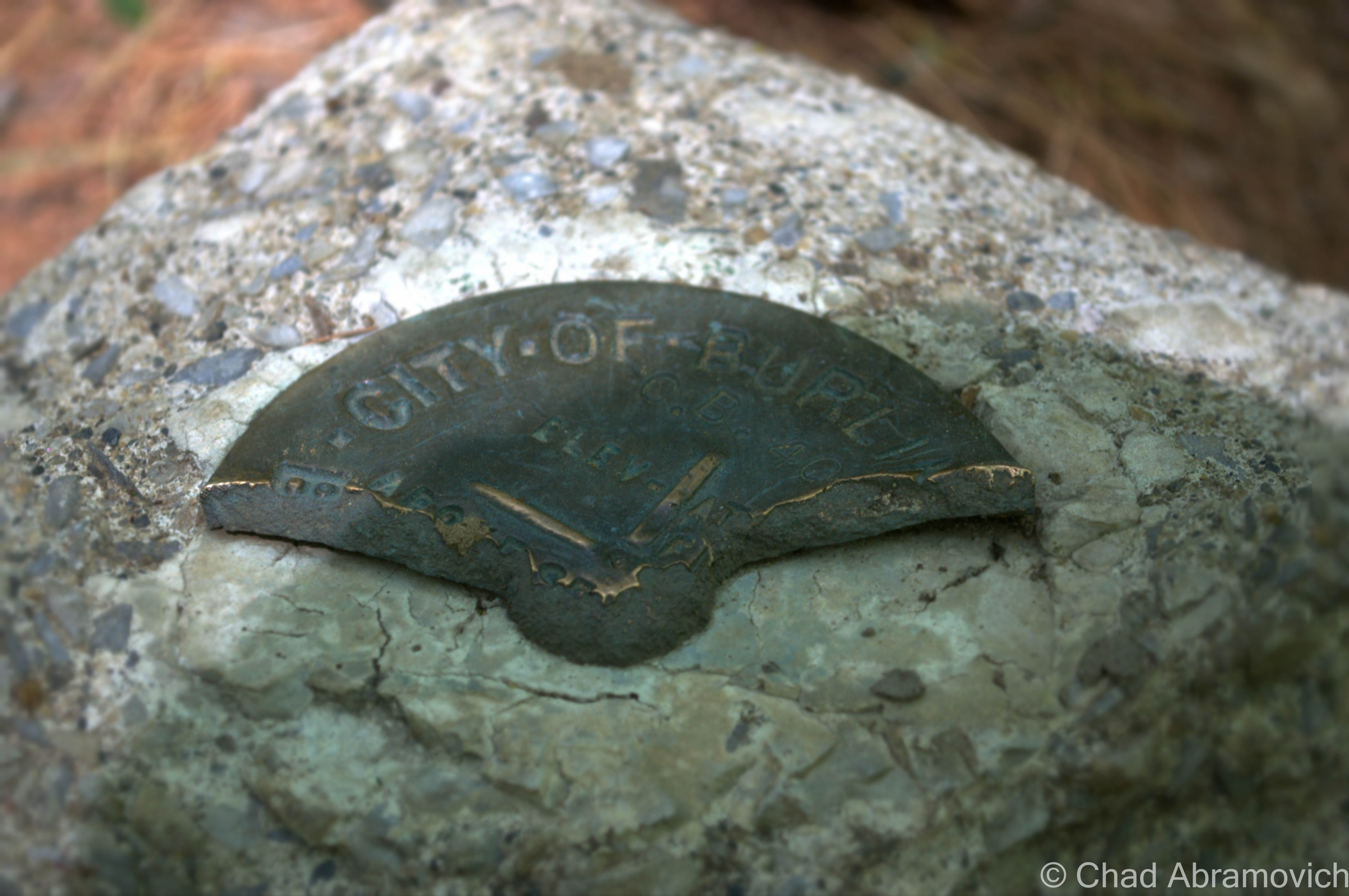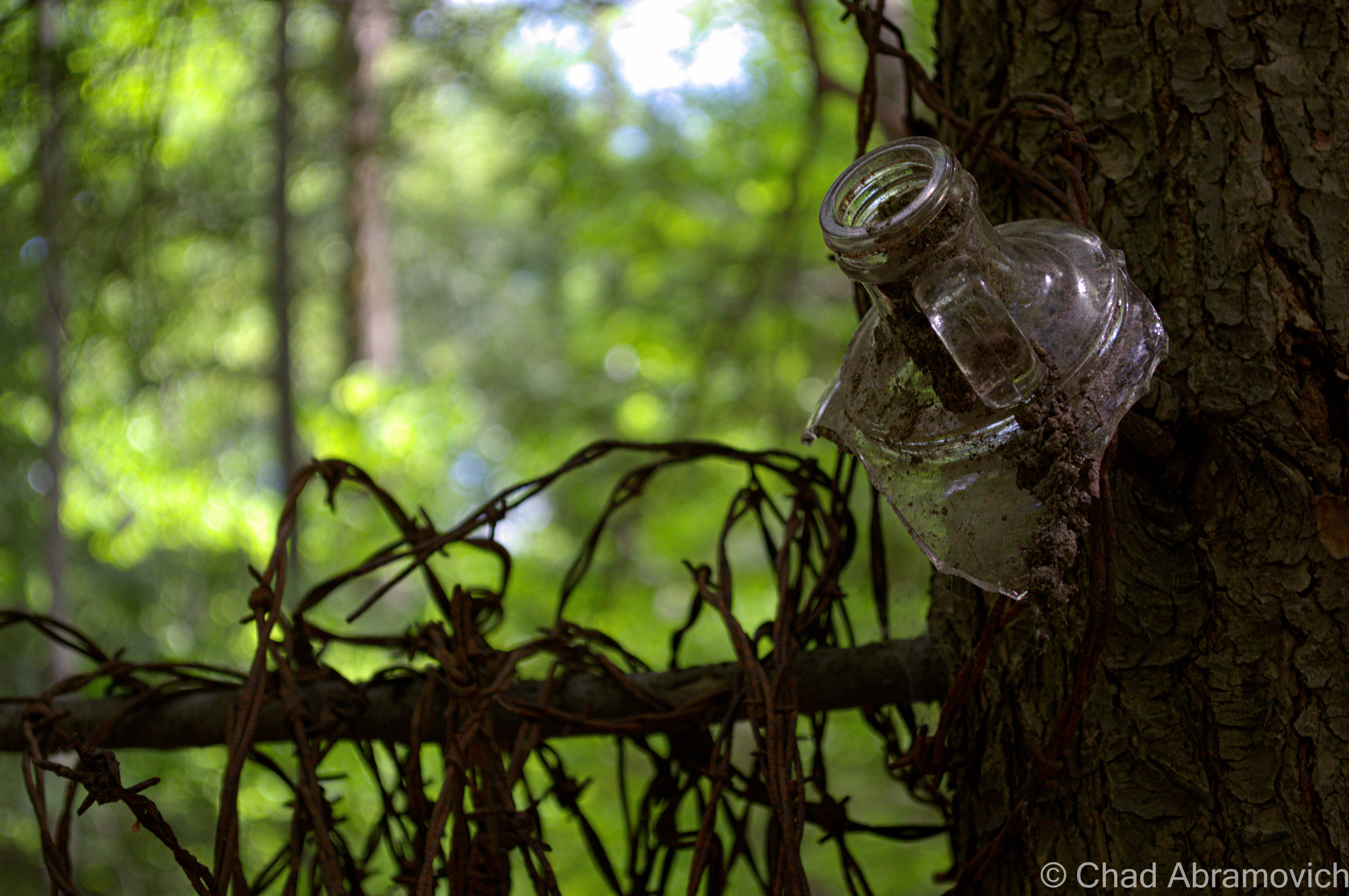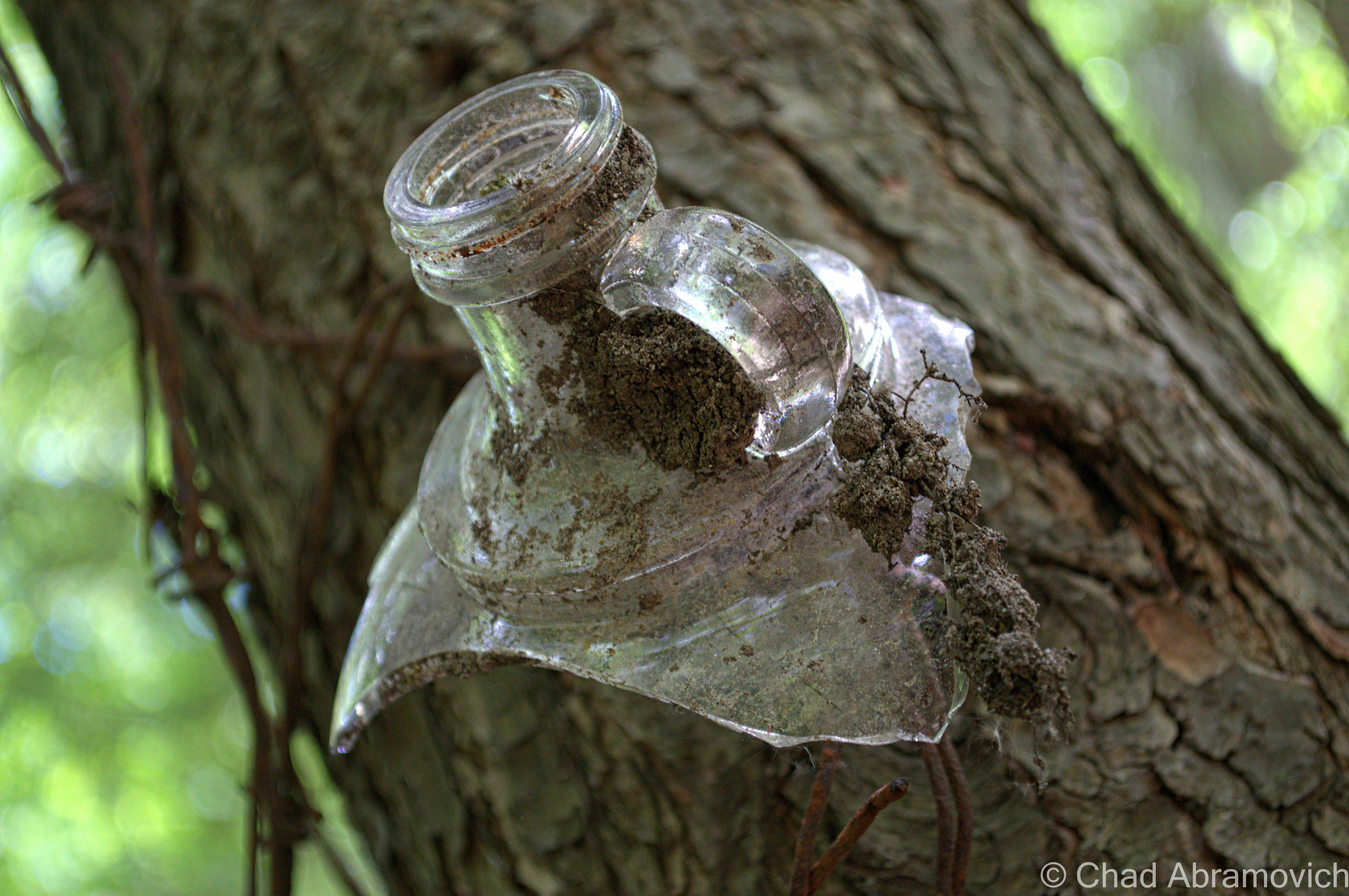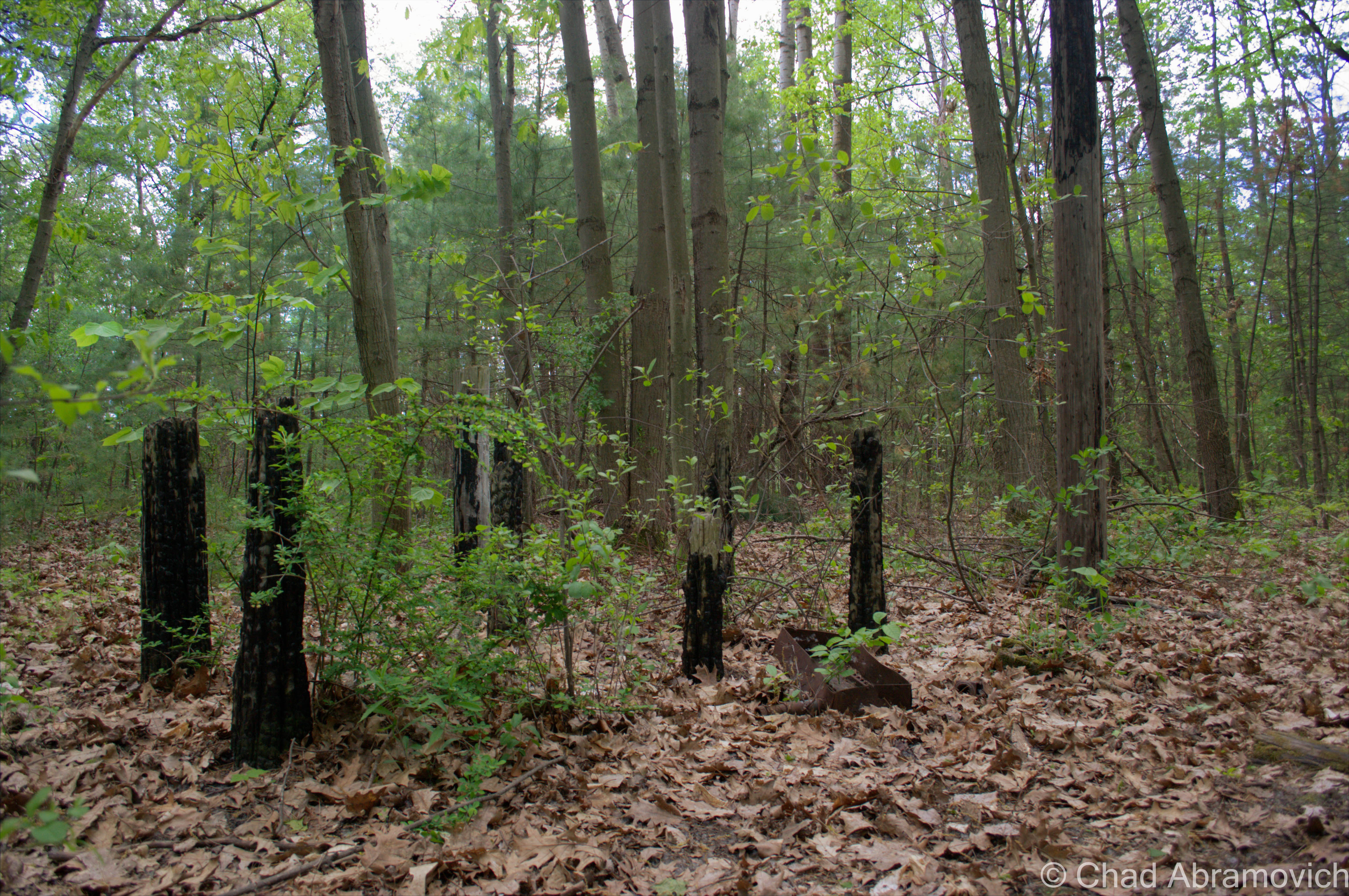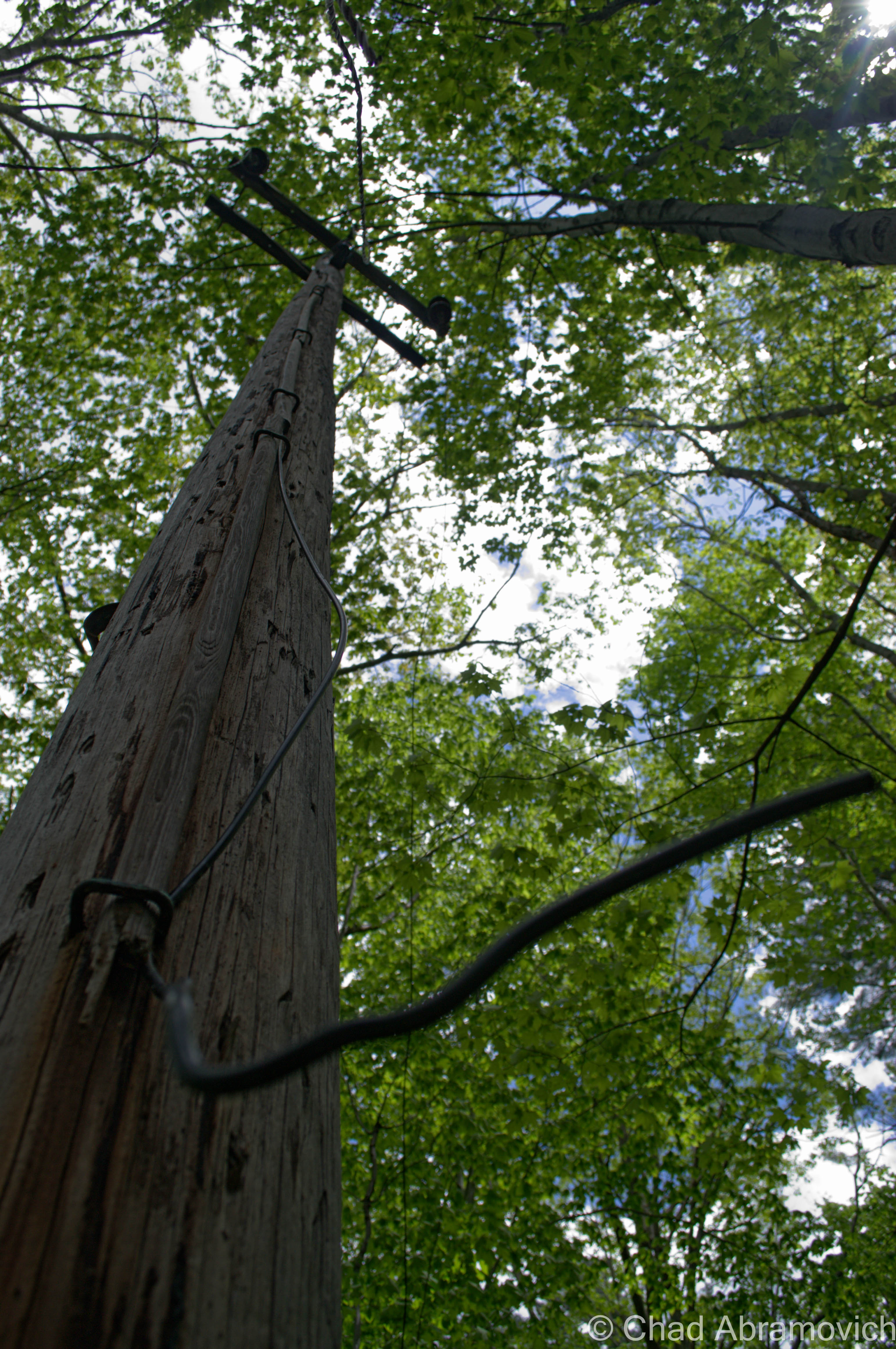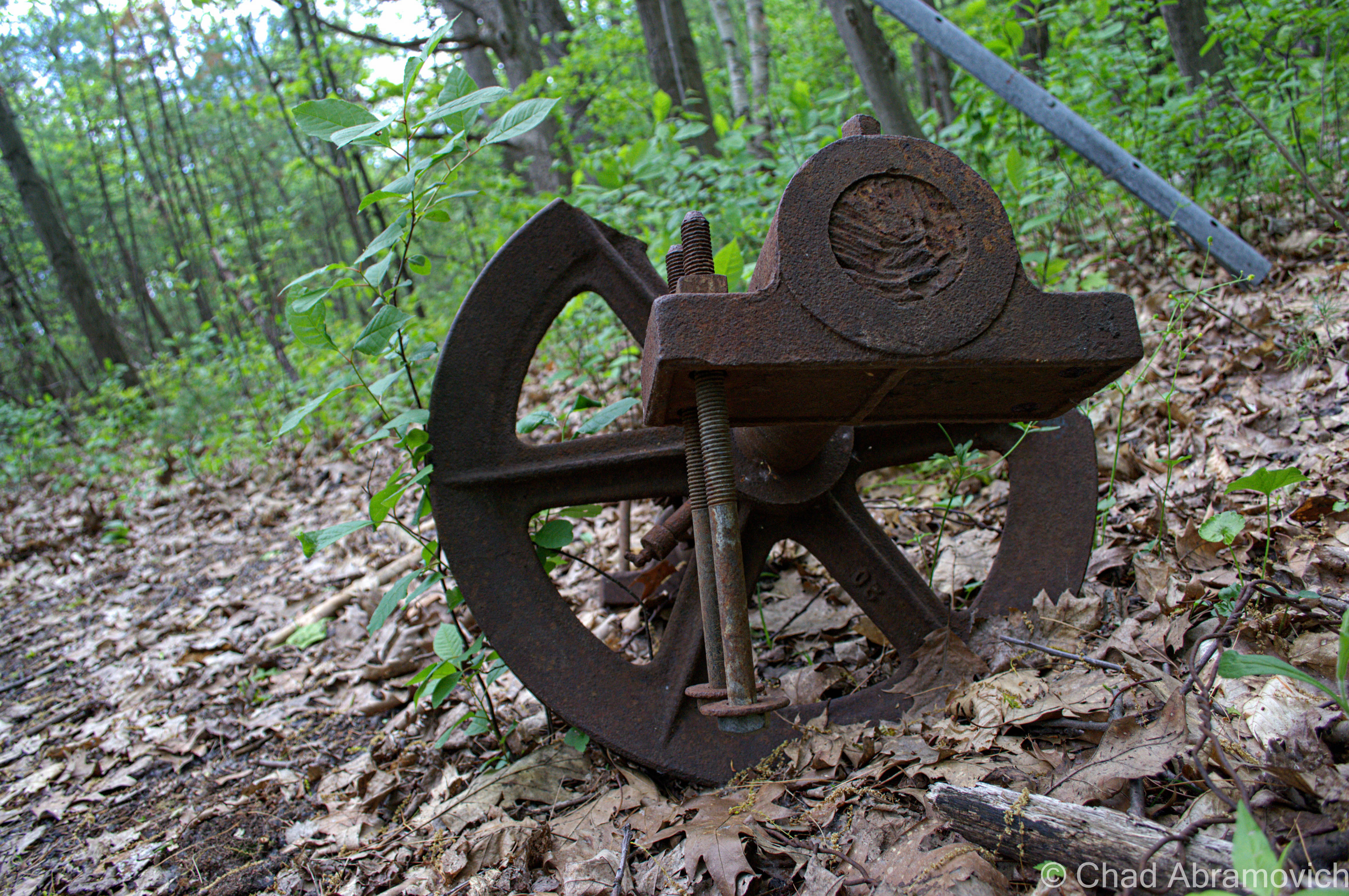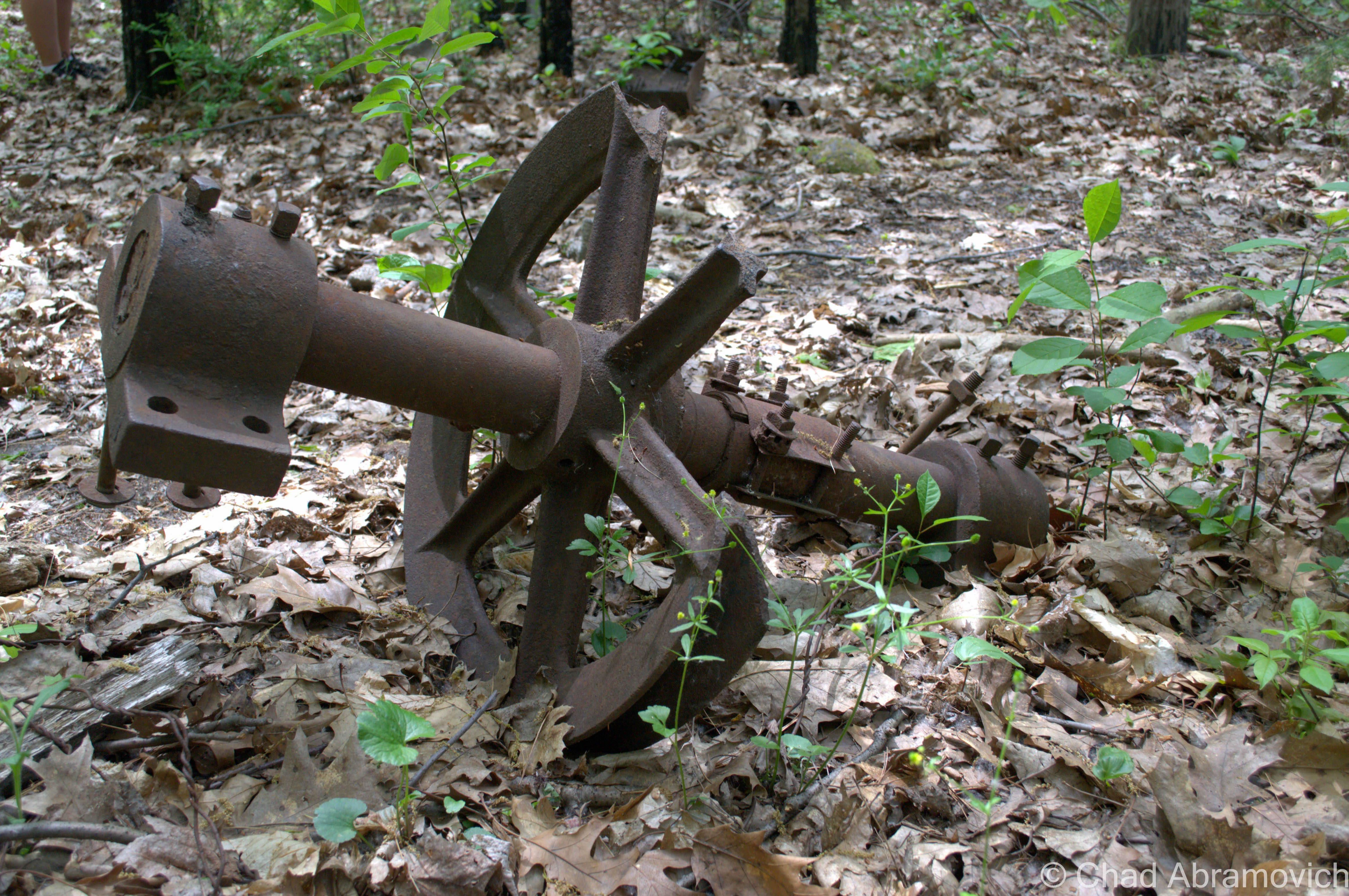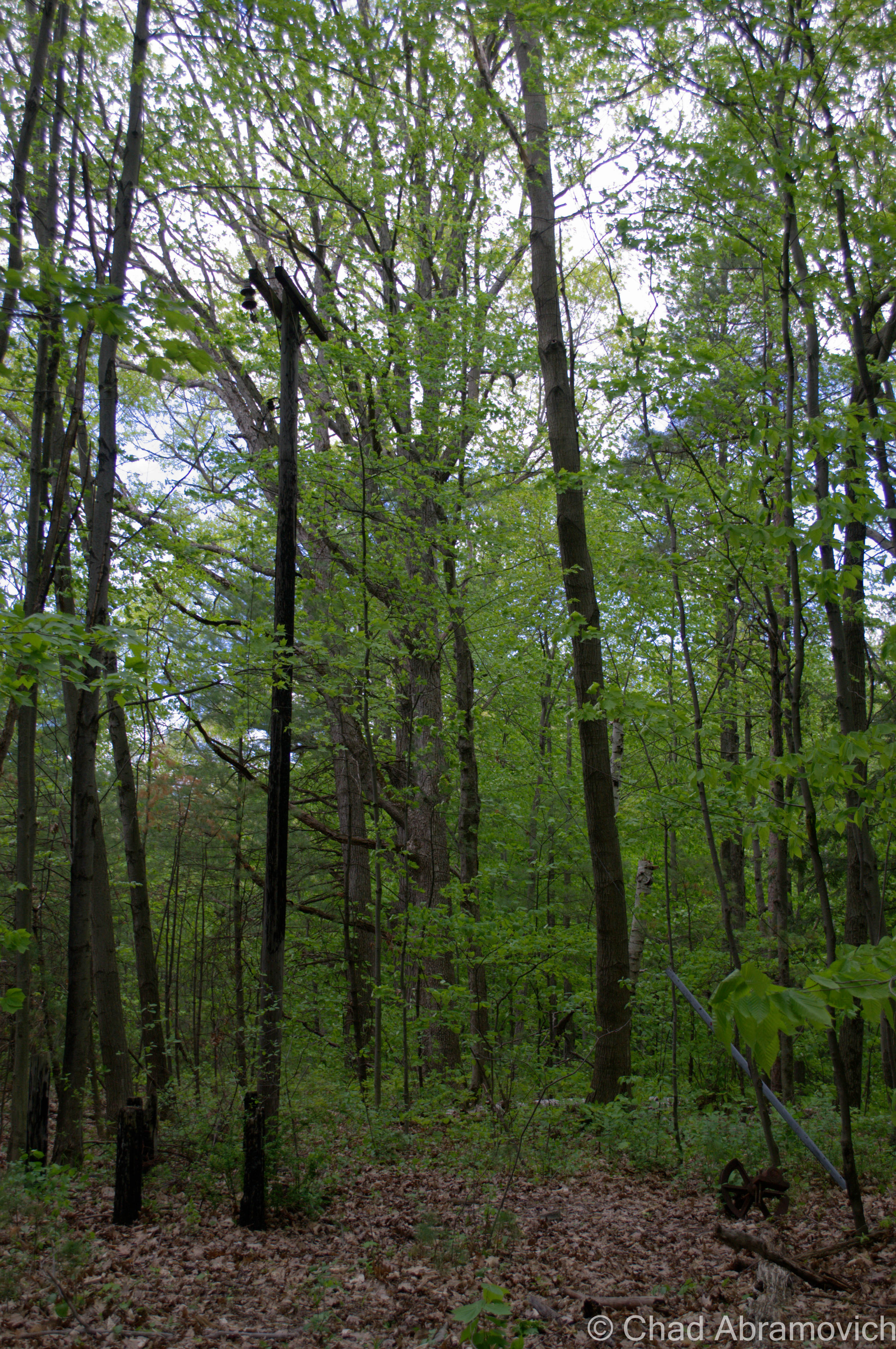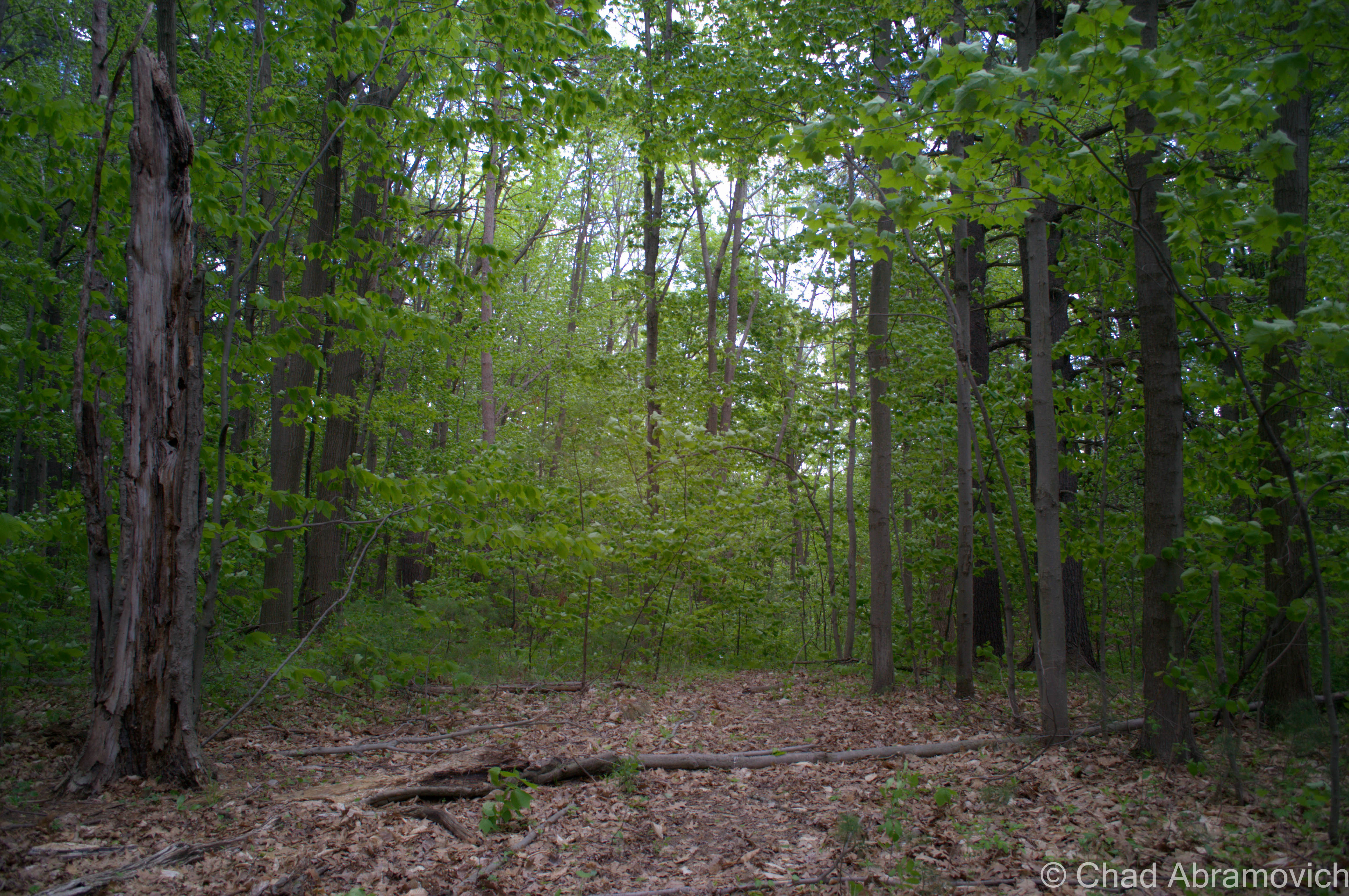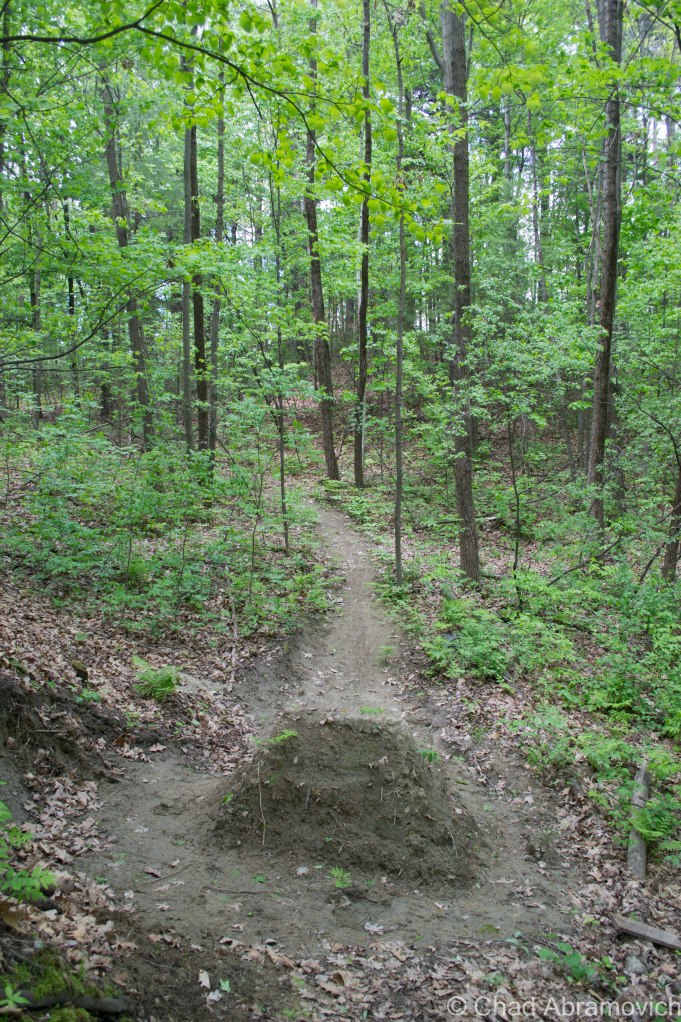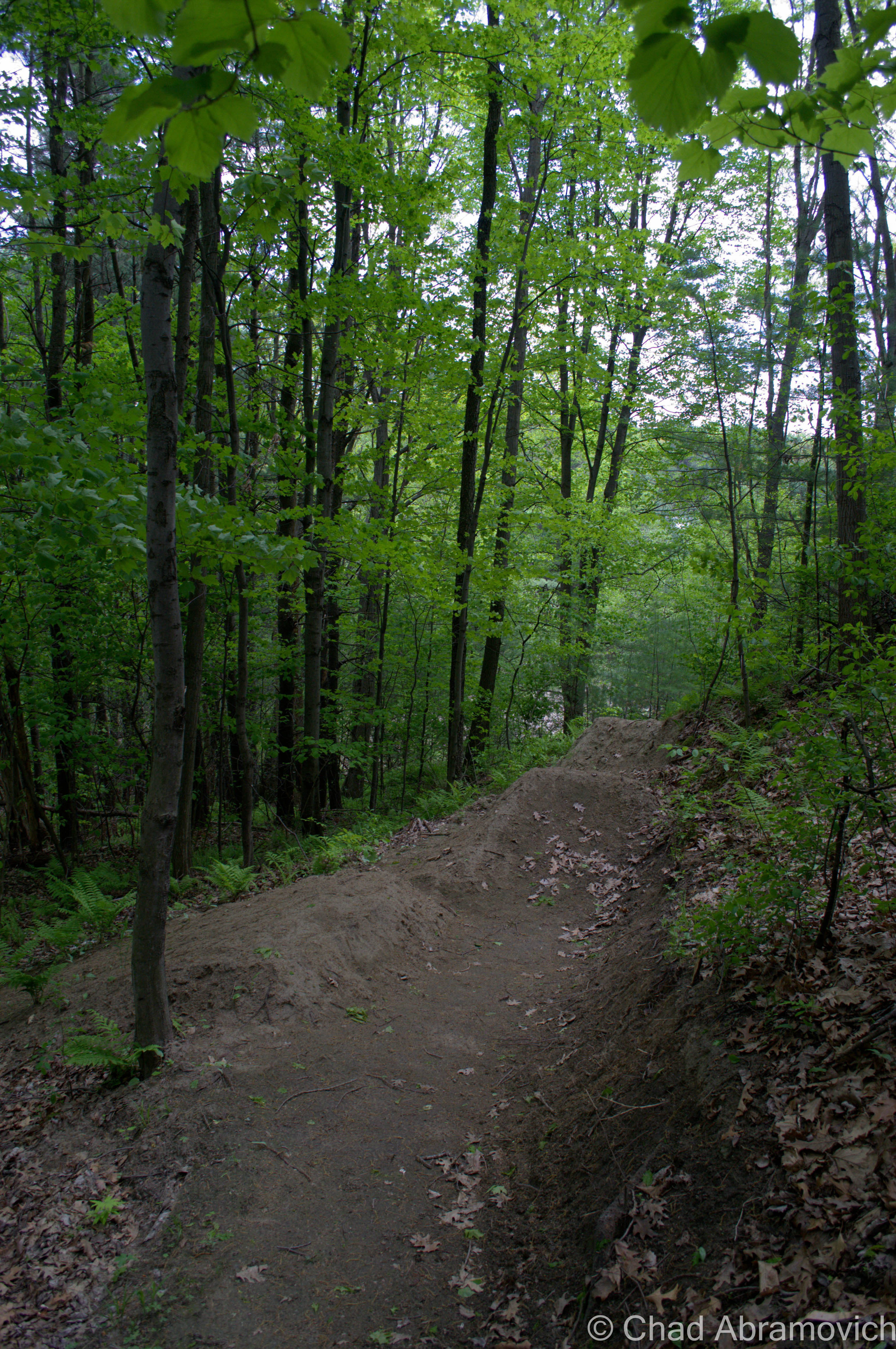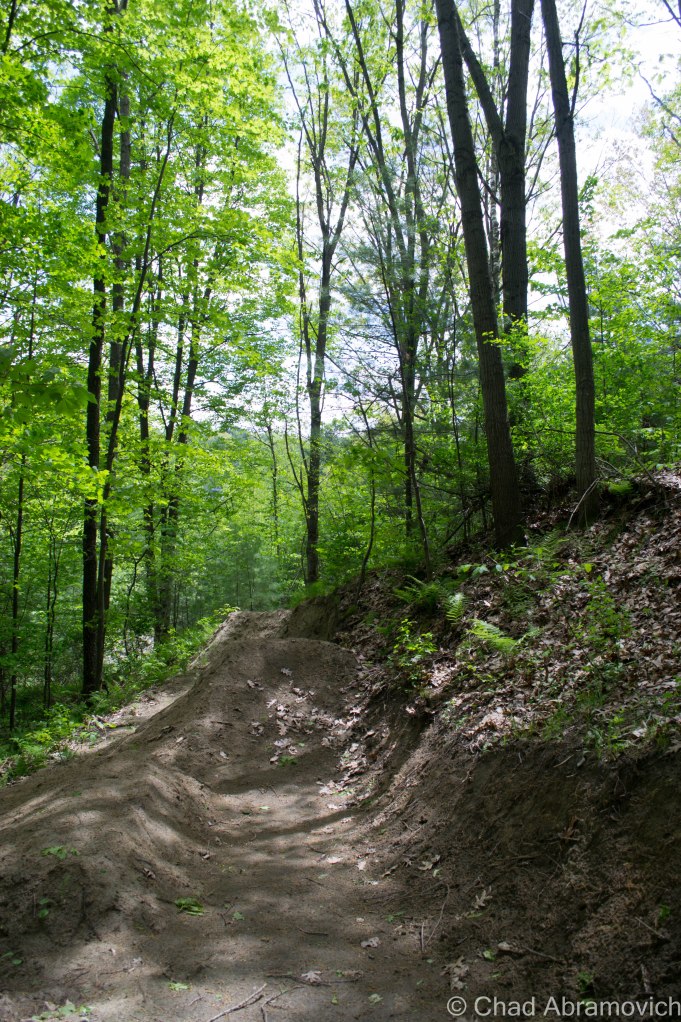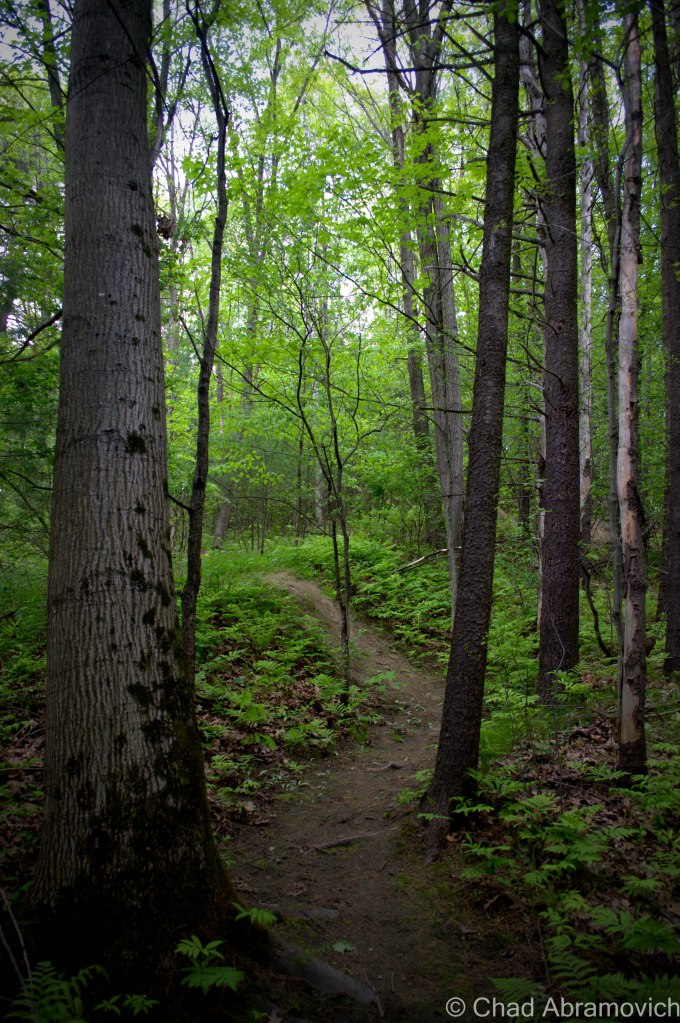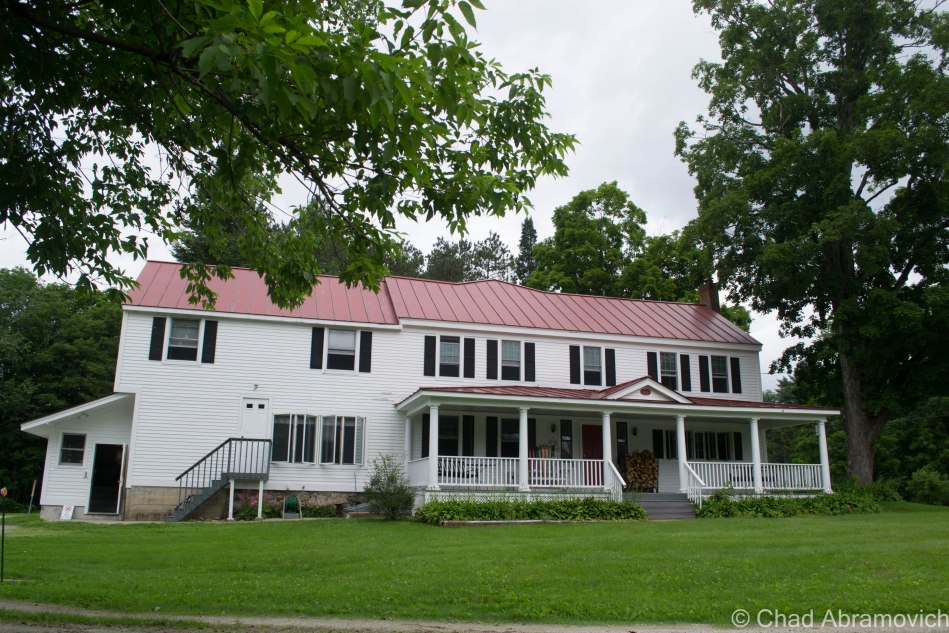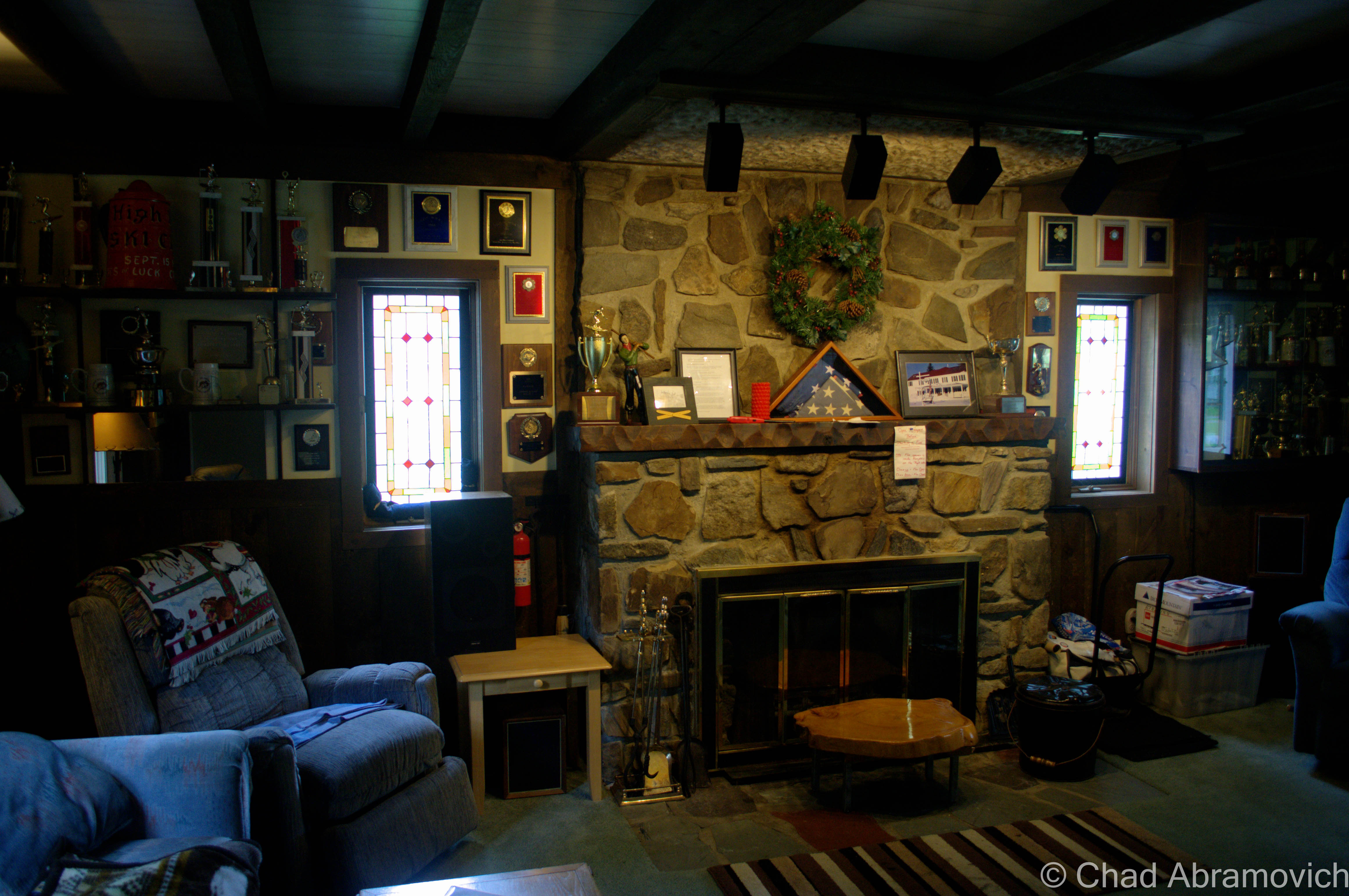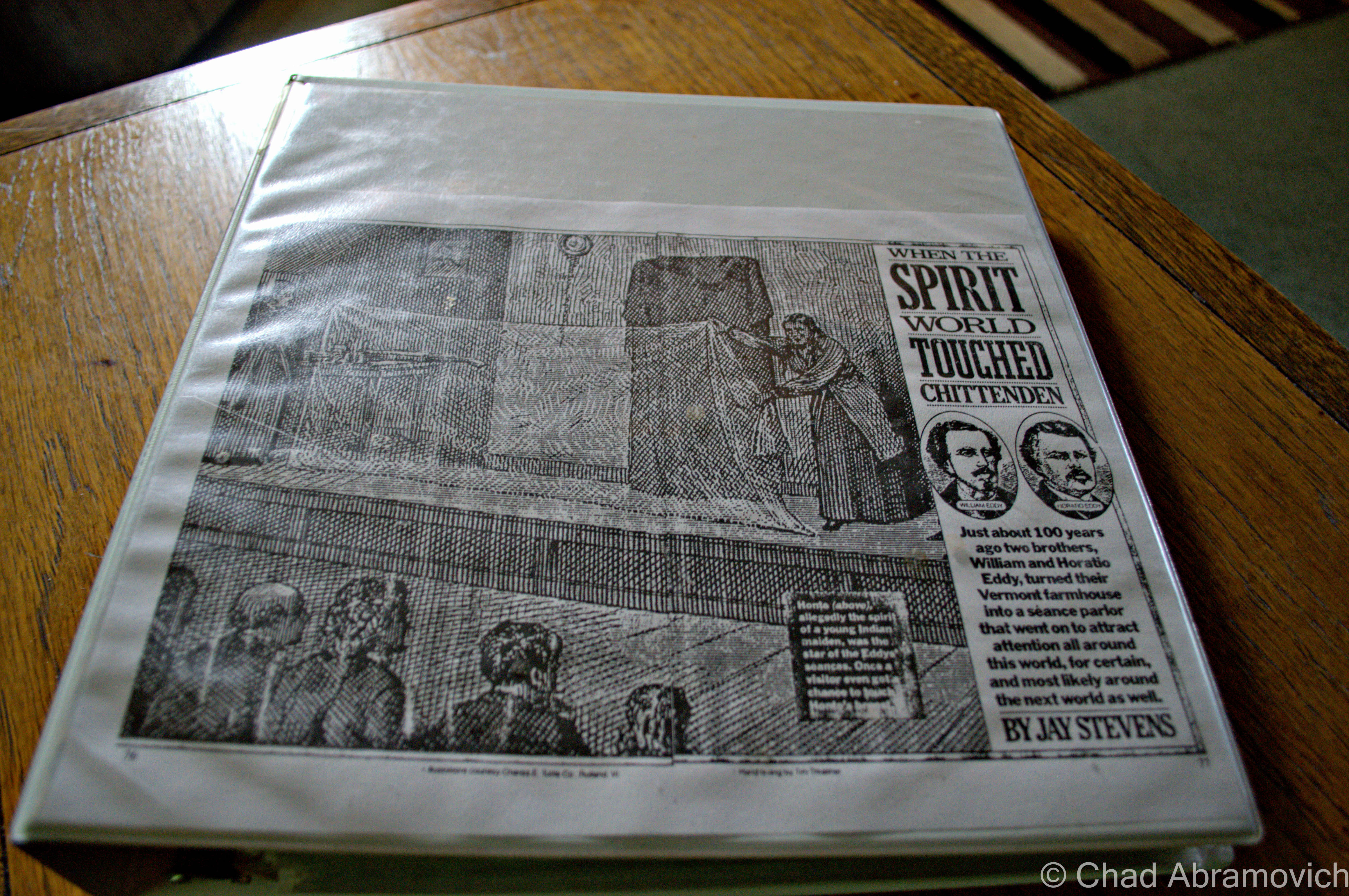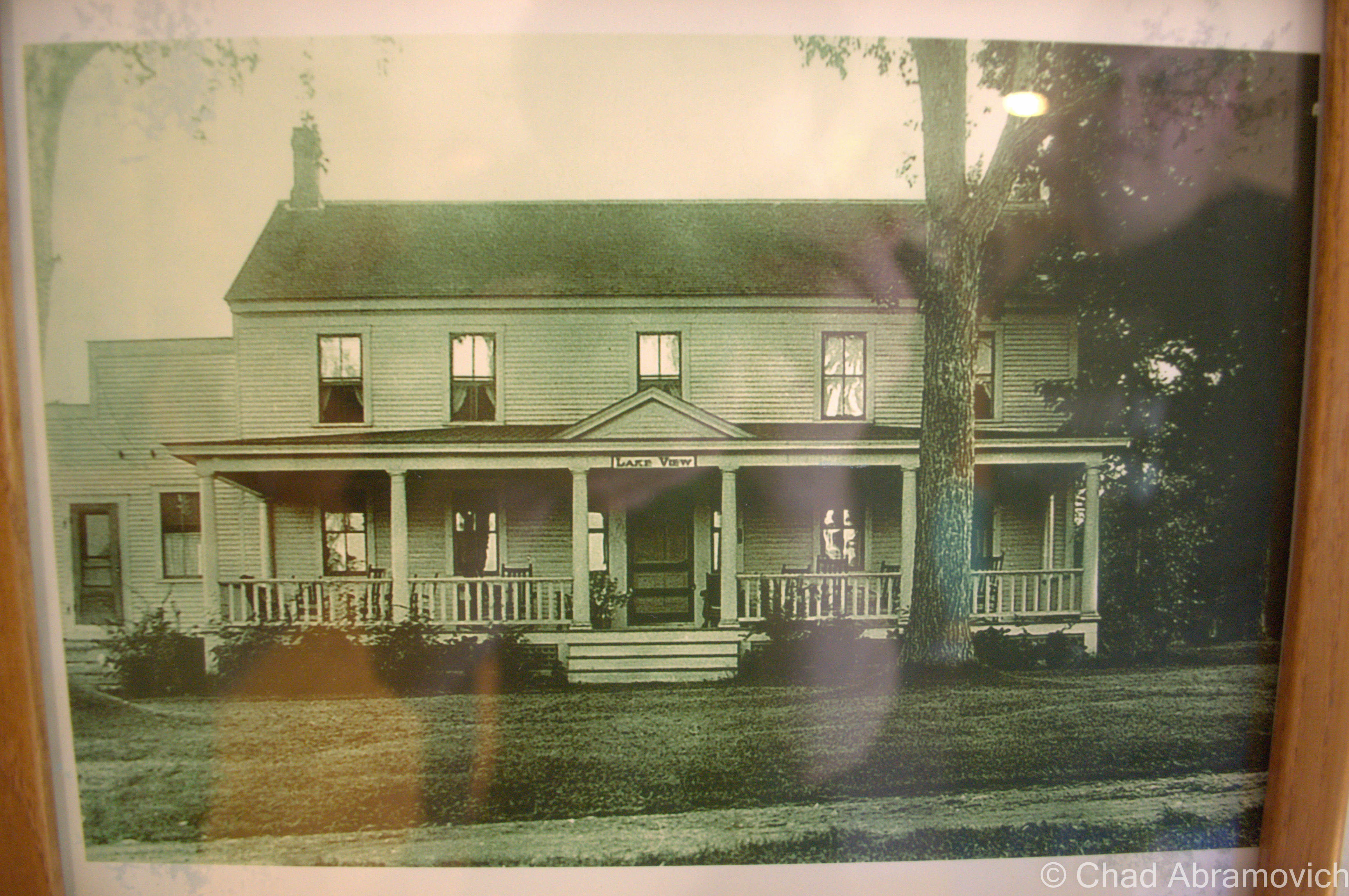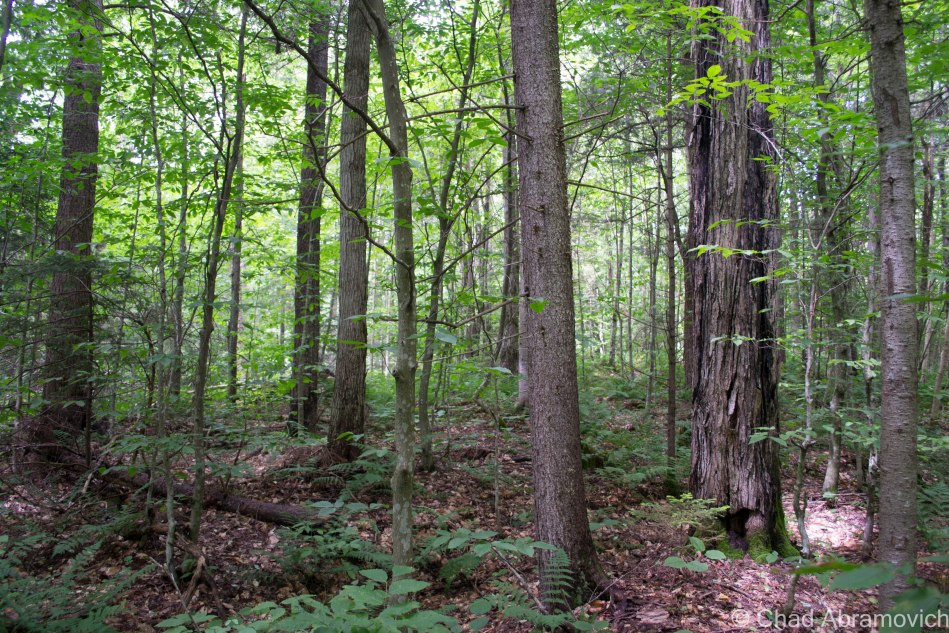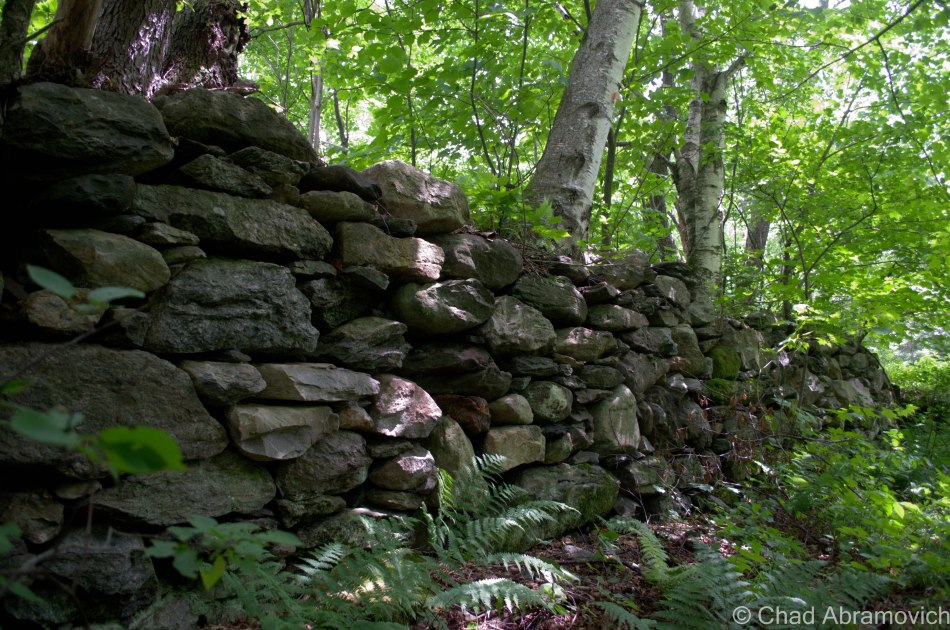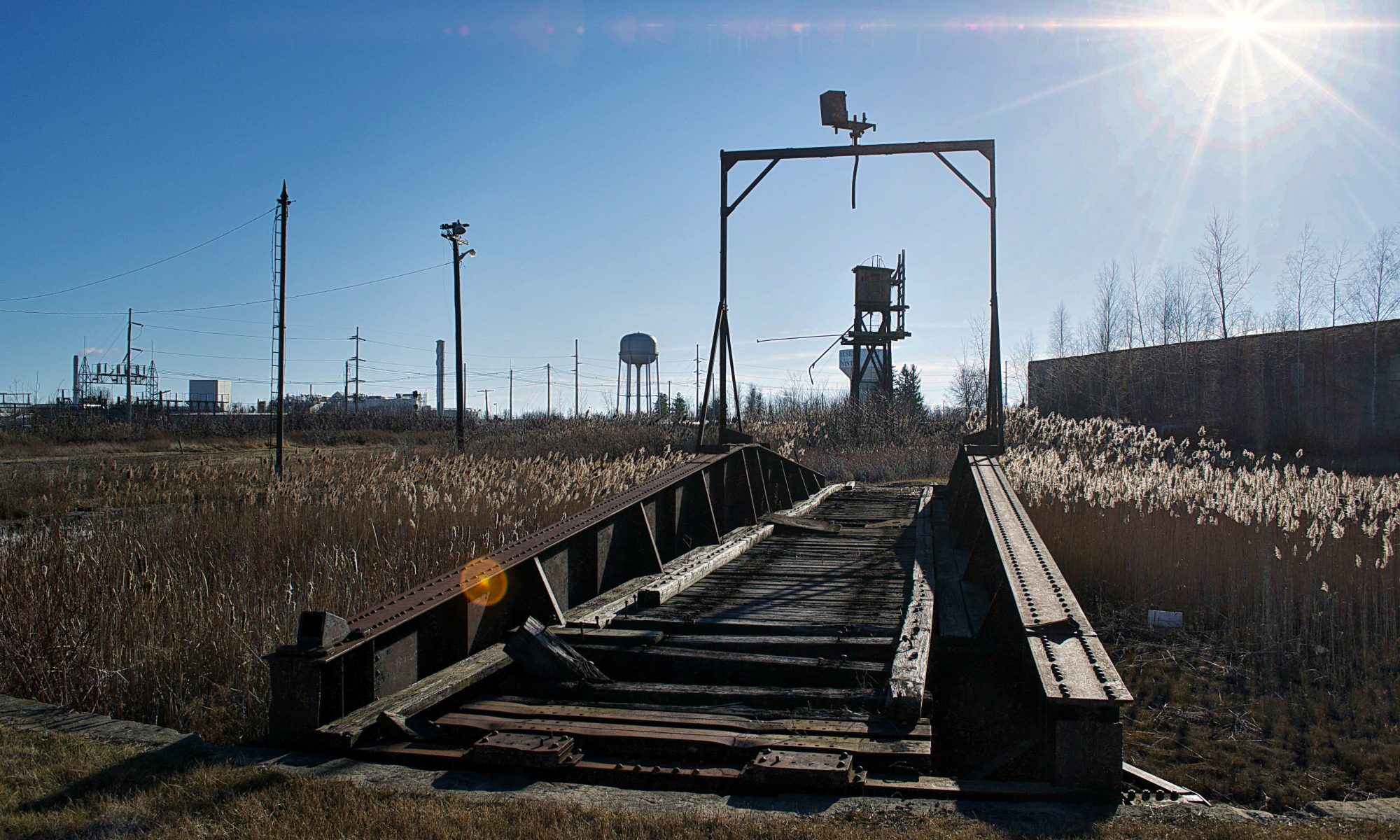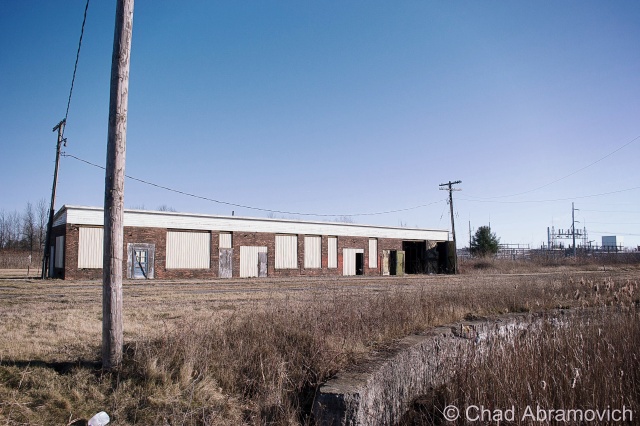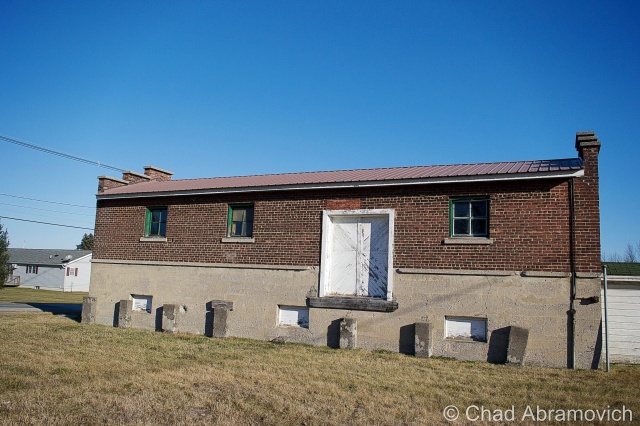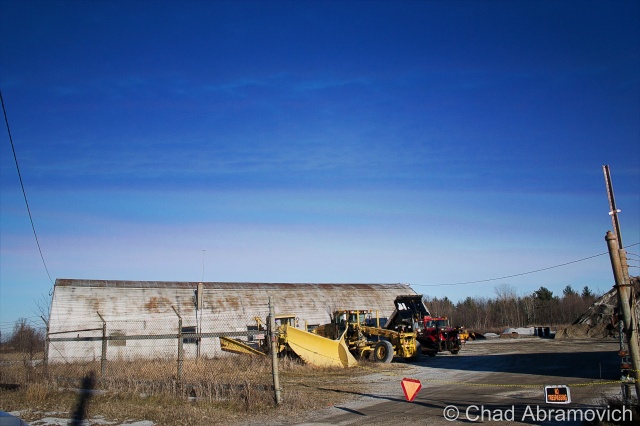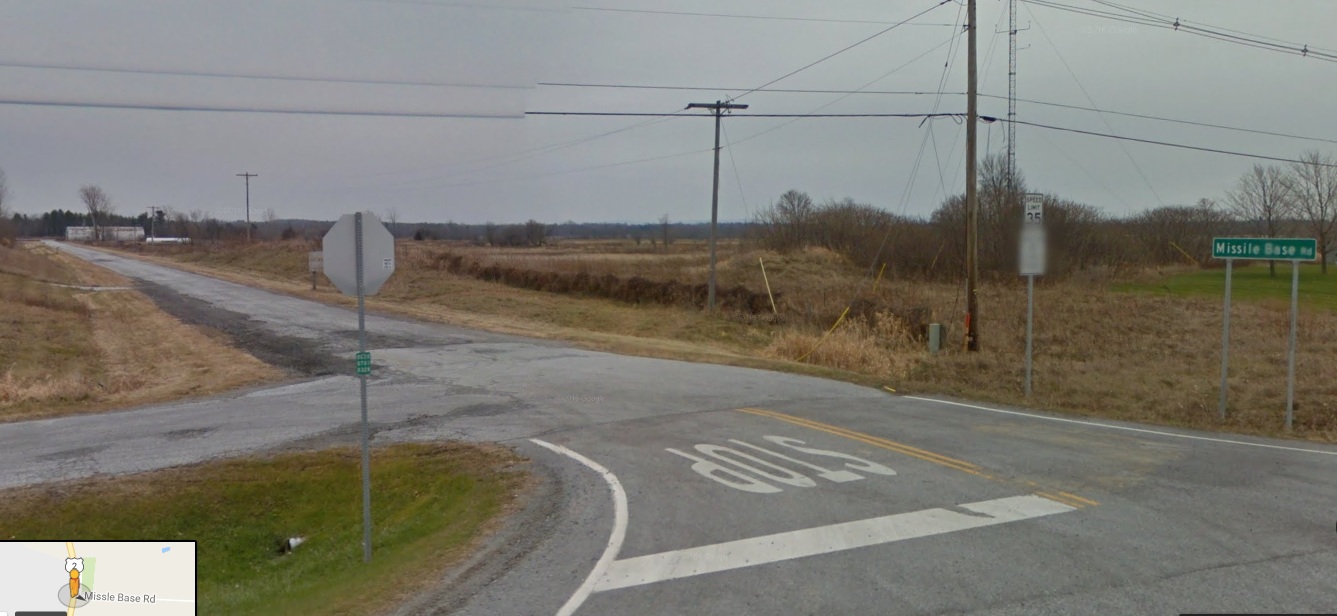Somewhere underneath an unremarkable section of industrial railroad tracks, is a stone tunnel with an enduring mystery. Who built it, when and why all seem to be accomplishments that was never passed down to the modern world, and yet, this intriguing piece of Vermont curio oddly exists untouched in the stretches of the state’s largest metropolitan area – its presence not noticed by the majority unless you’re one of the select few that know about it.
If you manage to find it, you can hear the hum of traffic nearby, the various noises that scream from a nearby generating plant and the voices of passing on-goers that carry out though the woods. And yet, here the tunnel sits in an enclaved world protected by treacherous railroad banks covered in thorns and foliage and the remnants of several homeless camps scattered around basins of coal black ooze – an ominous warning for those who decide to leave their world and enter this one.
And once you approach the tunnel entrance, a foul blackness that cannot be penetrated descends deep into the bowels of the hillside.
Stories abound about this strange tunnel. Speaking to a friend of mine, he was able to recall plenty of bizarre urban legends and strange lore about it. There was said to be a forbidding barred gate which lies somewhere inside, and macabre tales of dead bodies being discovered deep in the far recesses. I knew I had to see such a place!
We conversed further, as I became eager to get to the bottom of this. The most interesting detail about this tunnel is what makes it so enigmatic. No one seems to be quite sure about why it exists, or when it was constructed.
But there are plenty of theories as to why it was built. Some speculate that it was once a cow tunnel, a way of transporting livestock from one pasture to another which were divided by the railroads. And if you take modern day agro-industrial farming methods into account, the cows of yesteryear were smaller – making the tunnel’s size a realistic possibility. But if this was the case, then why does it dead end into a dripping stone wall some 60 feet from the entrance? Other theories are that when development came to the area, the property owners across the tracks discovered the entrance and sealed it up. But there is no proof of this, so we’re back to speculating. Was the tunnel built one way, or did it have another entrance?
Some speculate that the tunnel was built to house railroad supplies, such as dynamite and rail ties during construction in the mid 1800s – however, this too is only a theory. For a simplistic project, this seemed like a strangely labor intensive storage shed. Too add further confusion, we still aren’t really sure if the tunnel predates the railroad or not, which leads me to the most intriguing possibility.
There are some that romanticize about the tunnel being so archaic that it predates Columbian settlement here in the United States. The stones are old, hand hewn and placed to form the walls and ceiling in baffling rhythmic precision in their uneven size and form- so it is a possibility. After all, it is now an accepted theory that Celtic copper miners once came to Vermont before the Europeans did some 3000 years ago, to harvest our vast copper resources when Europe was in the midst of a copper shortage. Upon doing so, they left their legacy here by building several mysterious stone structures and tunnels that lay scattered across the state, some even showcasing ancient inscriptions evocative of that time period. Today, these strange mounds are a topic of hot debate amongst archaeologists. However, Vermont’s ancient stone structures were all constructed differently than the tunnel in question, and it doesn’t quite fit the picture here. Mortar was also used in the construction, meaning that the tunnel is relatively newer than what the first throngs of European explorers would have ran into.
With no specialist making a visit to the tunnel to officially verify the age of its construction, this theory can only be that. And we’re right back to where we started. But one thing is for certain, if you can find it, you can see it for yourself. And that’s what I planned on doing.
Visiting The Tunnel
It was a warm September day when myself and a friend went searching for this elusive tunnel. But the question was, how would we find it? The foliage around the tracks was so thick and unforgiving, that it would be impossible to distinguish a simple stone tunnel underneath so much that competed for our attention.
Eventually after we had been walking the tracks for a good while, we decided to just jump off into the woods, literally, and see if we could get a better view of the steep banks that slumped below the railroad bed. If there was a tunnel here, we’d have to be on ground level to see it. But this literal jump proved to be an adventure we didn’t take into account. Weeds, thick trees with hanging vines and a “ground” made from soggy marshlands and layers of rotting trees was the landscape we were now fighting against, and walking around in it was treacherous and tiresome.
People Of The Sticks
Throughout this desolate and unforgiving landscape, we began to notice a web of sinuous trails that were well worn, and disappeared behind the thick veil of foliage. Making a conscious risky decision, we picked one and followed it. Little did we expect to find what looked like imaginative landscaping attempts. In the middle of nowhere.
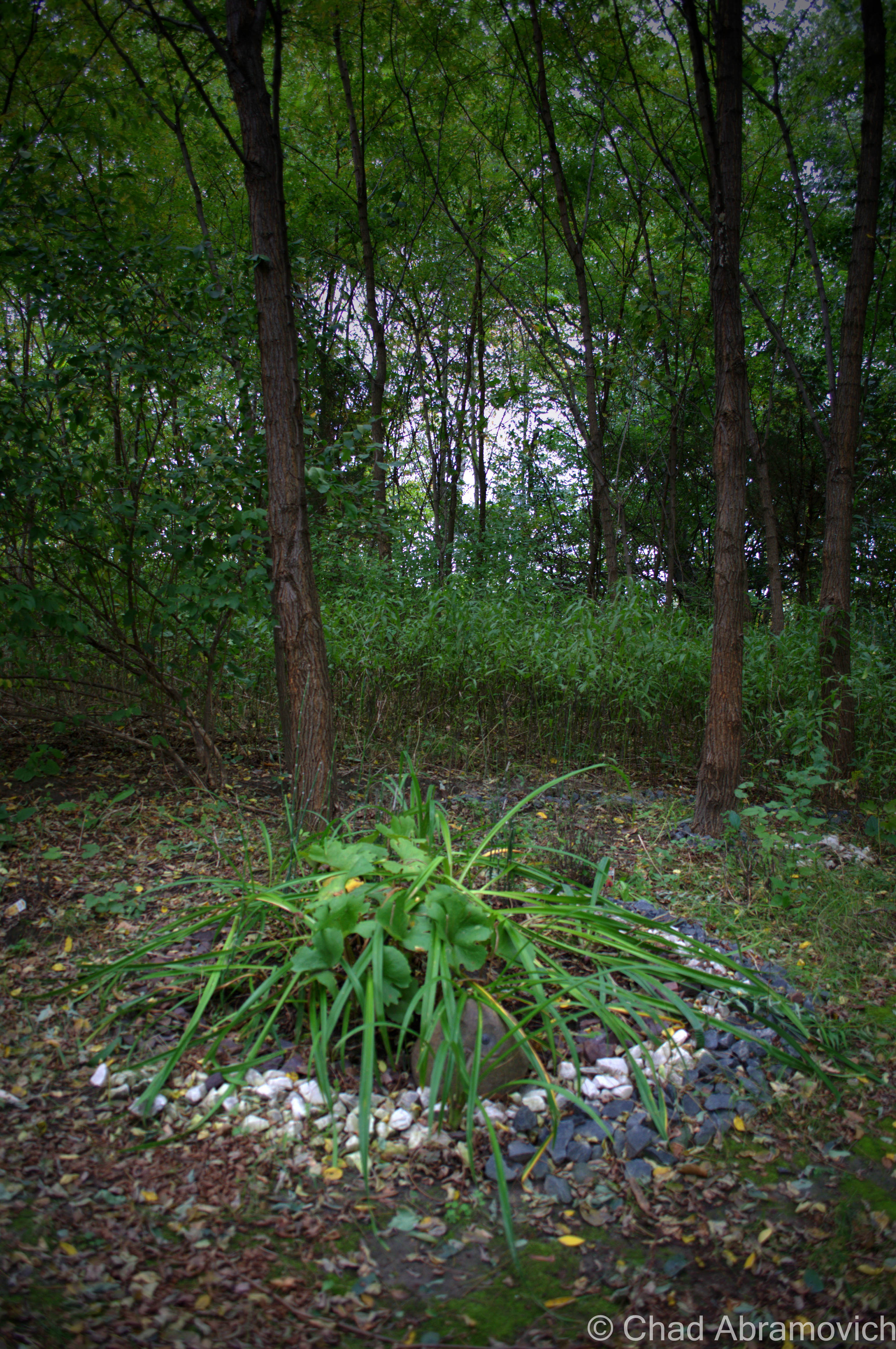

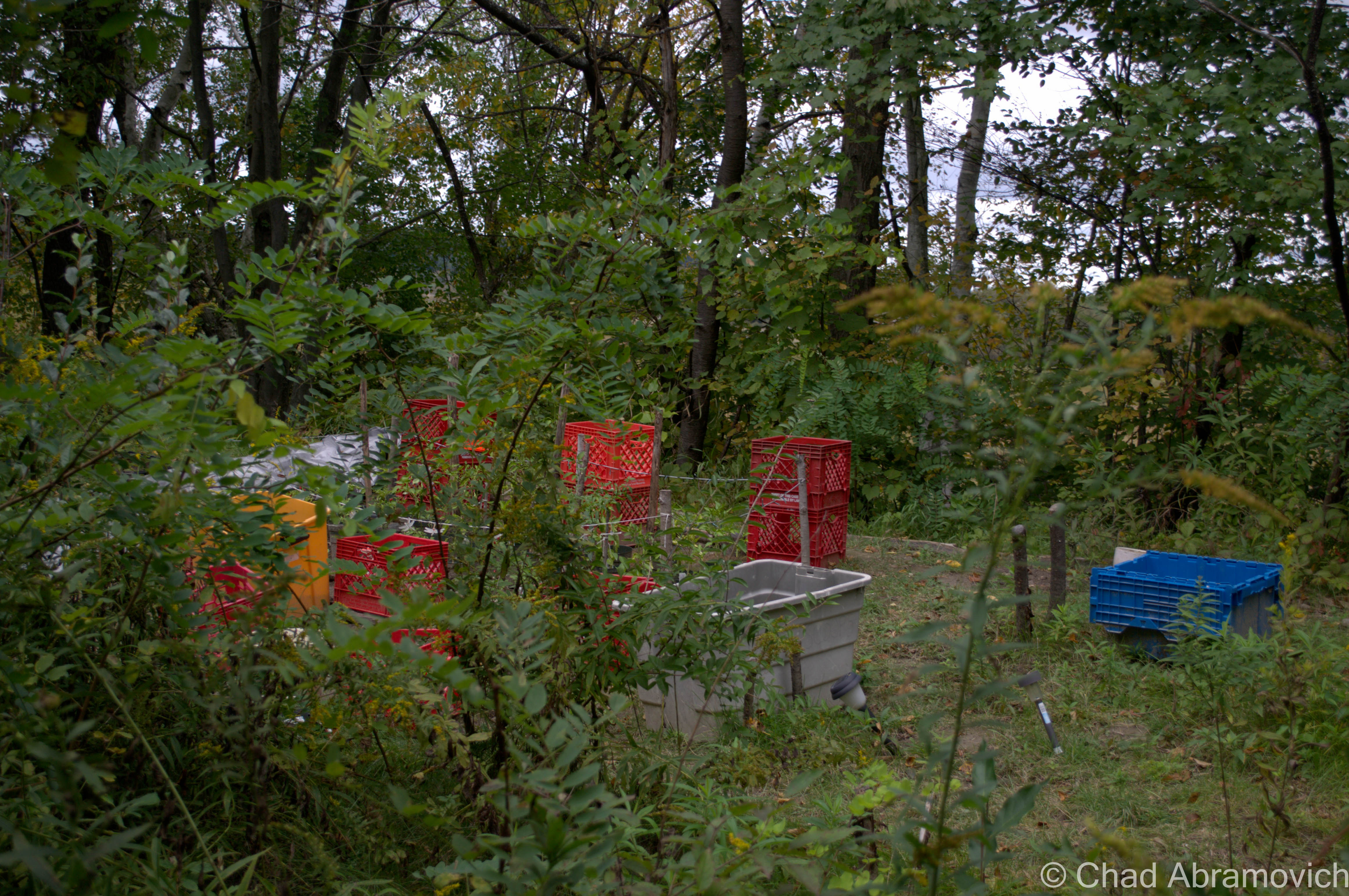
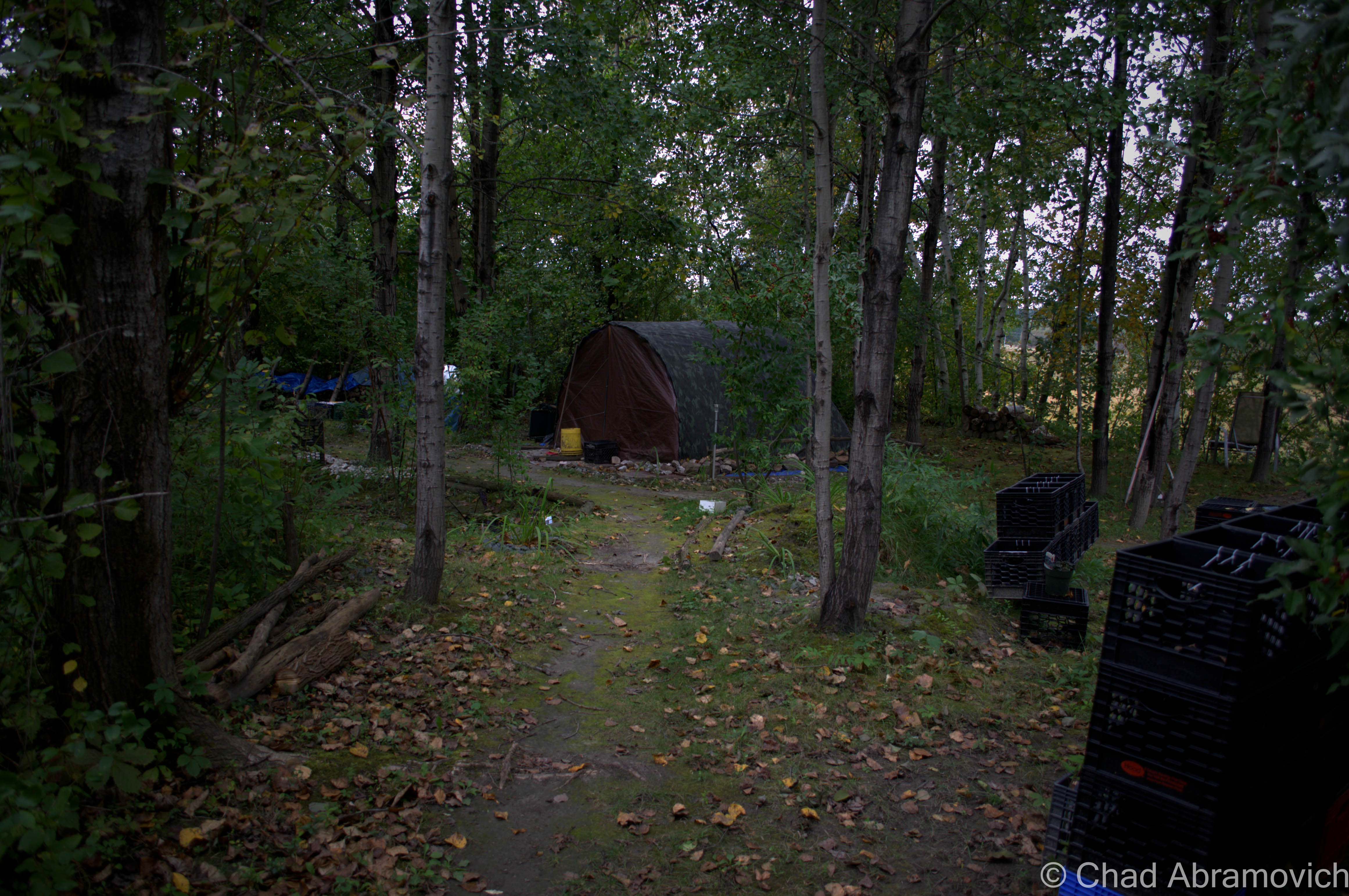
Finally, after an extensive amount of time searching, we had found the fabled tunnel.
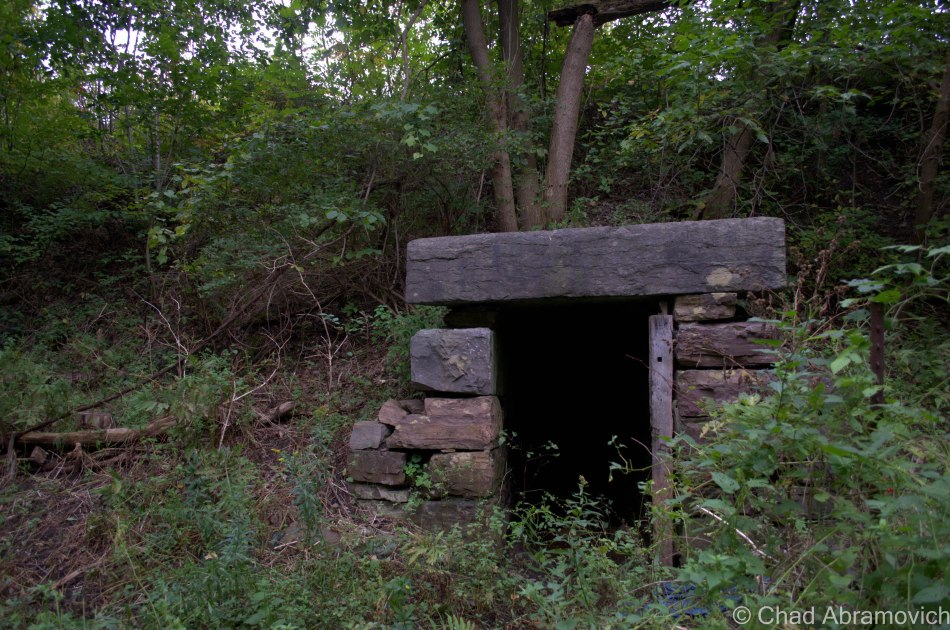
With the overwhelming evidence of homeless camps littering the immediate area, we approached cautiously. Who knew if anyone was sleeping (or perhaps, waiting) inside the dark depths of the tunnel, waiting to strike. Taking out a flashlight, we shined the LED light straight down the center of the shaft, illuminating the gloomy interior, and called out “hello?” a few times. The tunnel was empty, and in we went.
Inside the tunnel, we had to crouch down and ignore the uncomfortable feeling of dripping water coming from the stone roof. Immediately, we were met with the discarded remains of a homeless camp. Boots, a mattress, what appeared to be a few old wooden crates and a few knives that sat in pools of a foul orange slime that seemed to coat the entire tunnel floor. We noticed 2 odd features of the tunnel, one being 2 man made slits in the stone walls that stretched back to about my elbows – just wide enough to store small objects in. In the second, farthest section of the tunnel, the ceiling was supported by what looked like stolen railroad ties, their red rust stood out brilliantly in the flashlight beams.
Traversing this tunnel was no easy feat. The floor was slick and slippery. Not long after entering, our boots were covered with thick orange slime that offered us no traction. The further we ventured back, the more rotted the wood and debris became, almost disintegrating underneath our feat as the tunnel clearance became smaller and smaller. As we stood inside, trying to figure the great mystery about the place, it was impossible. The shadows of the past span so fast that everything the tunnel gave to me was blurred.
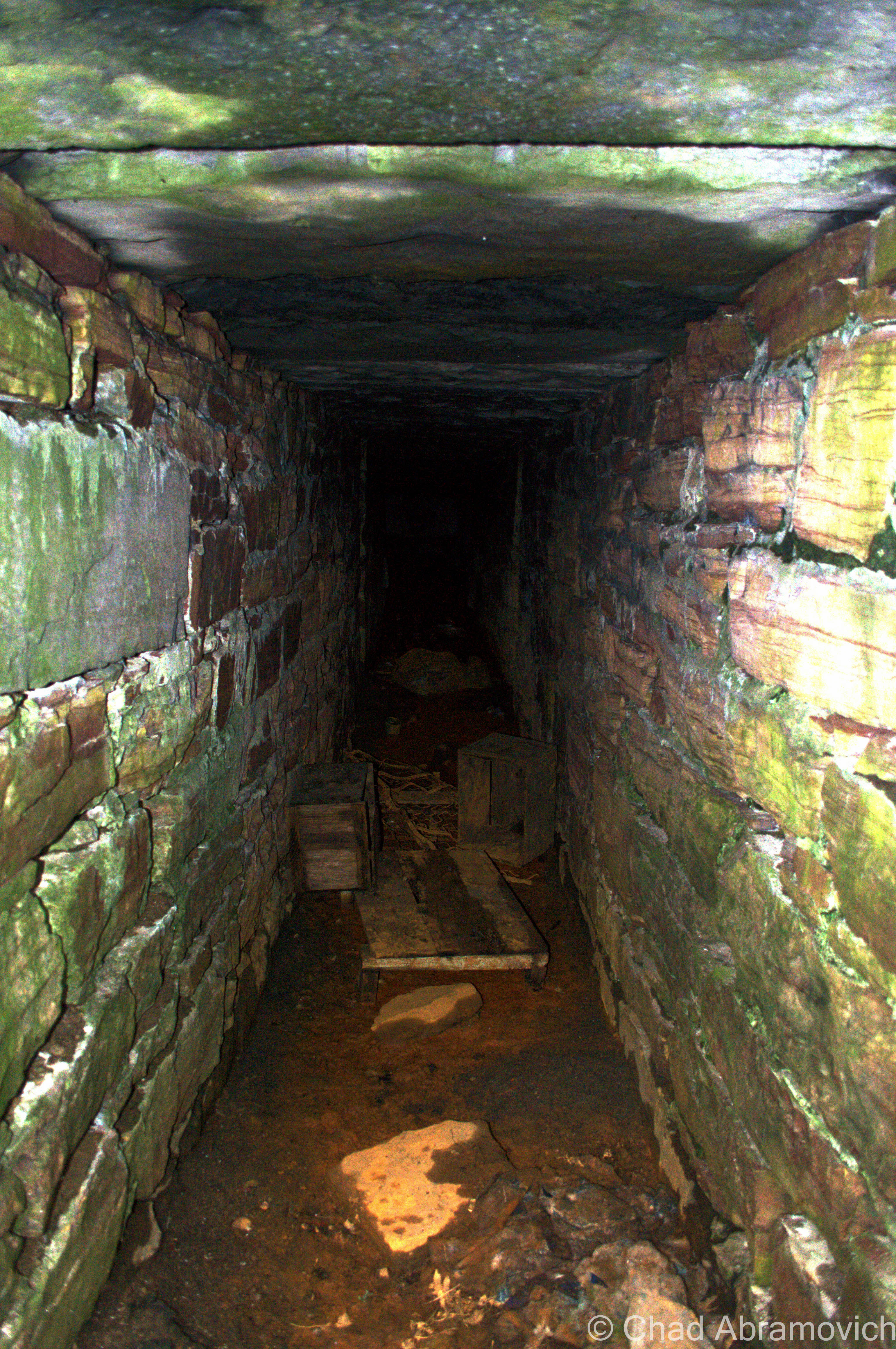
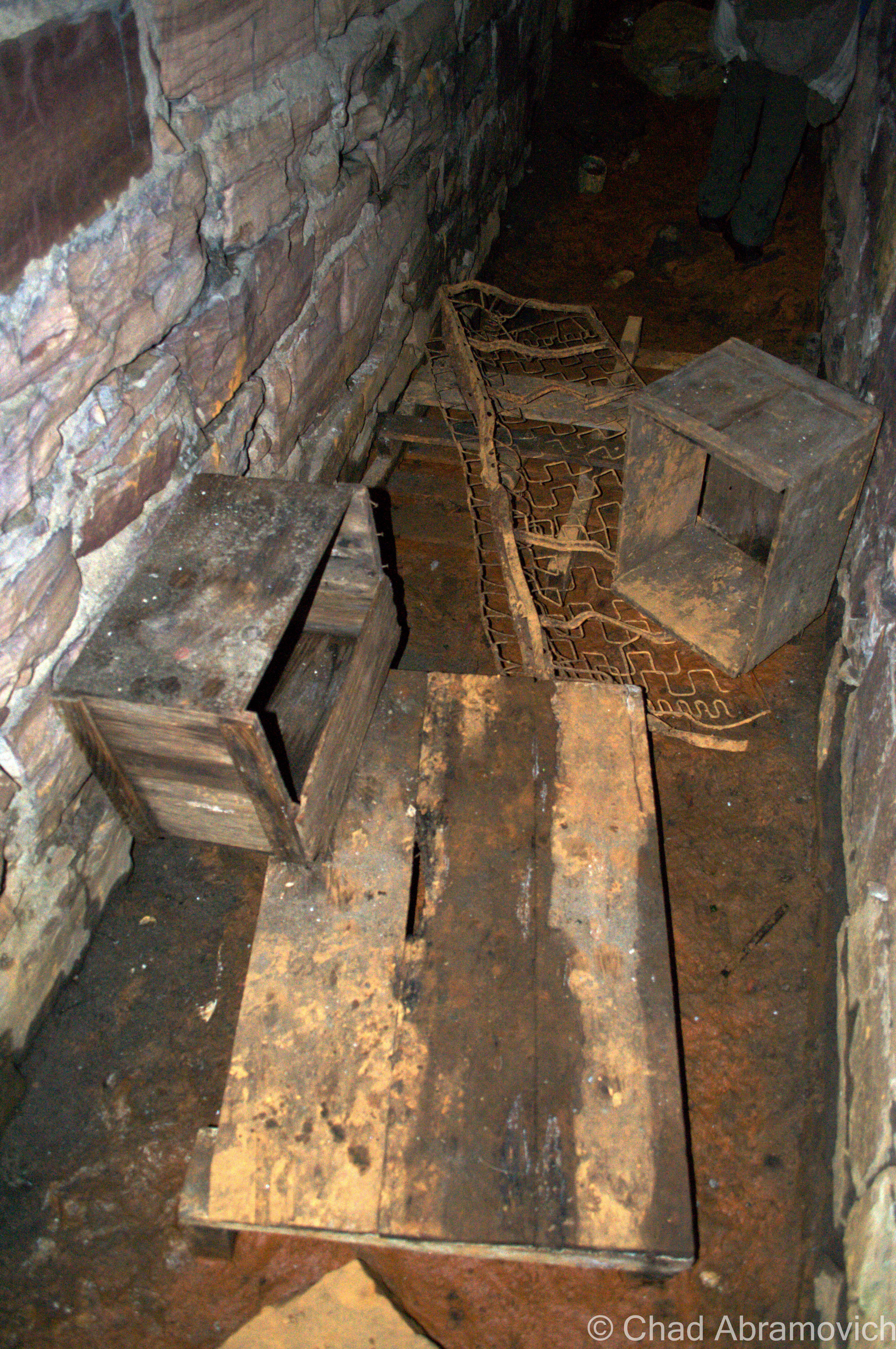
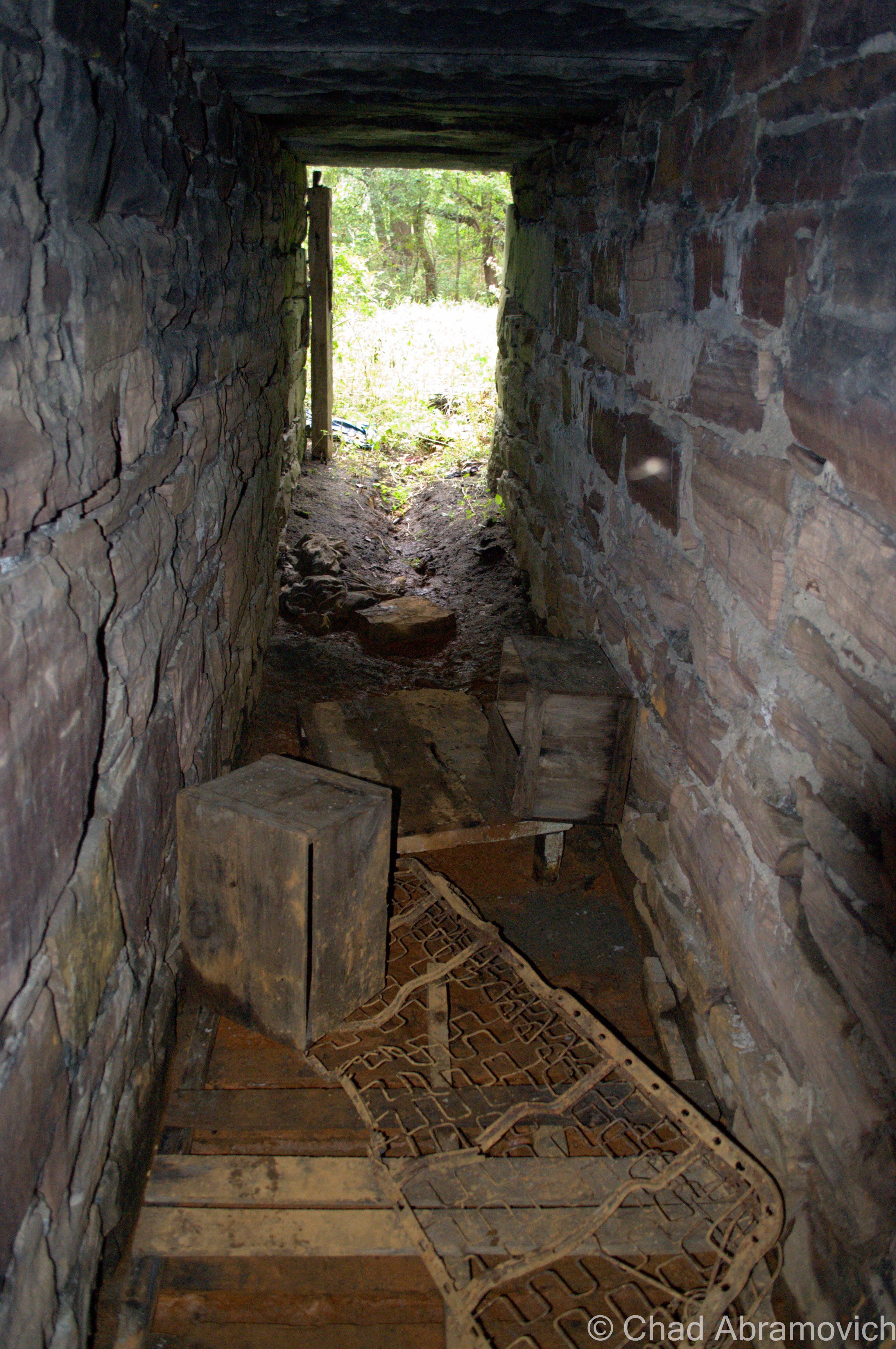
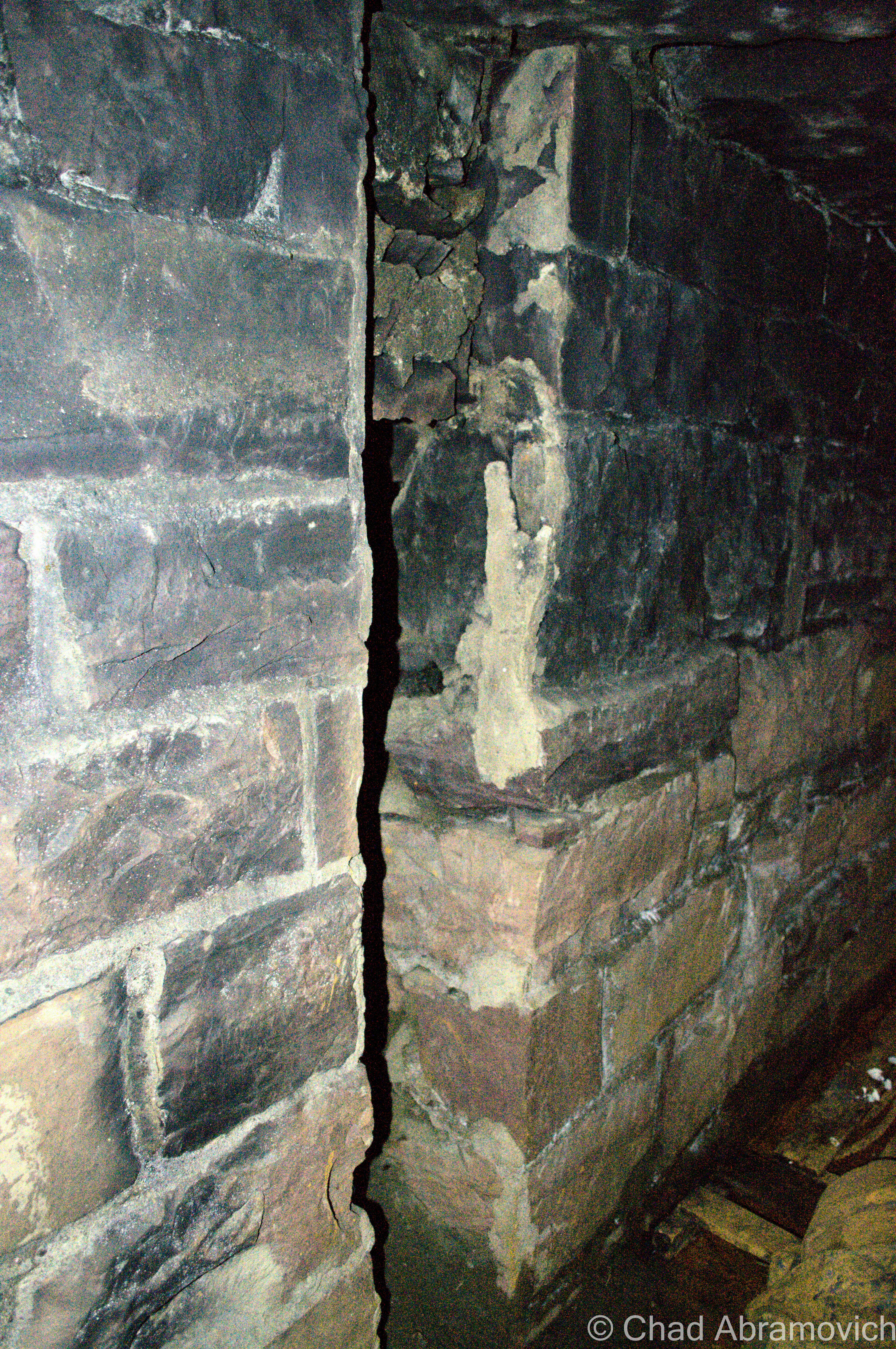

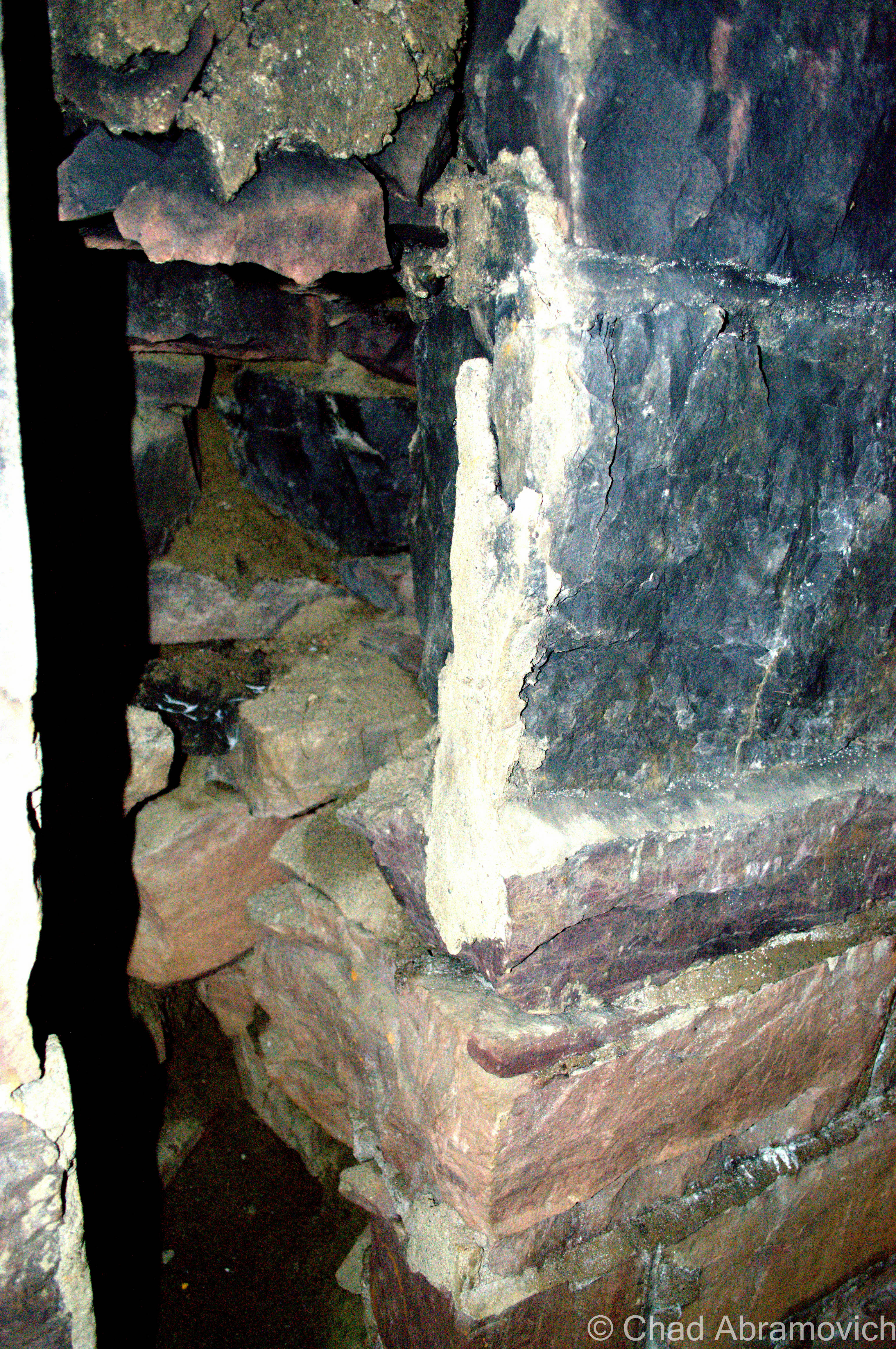
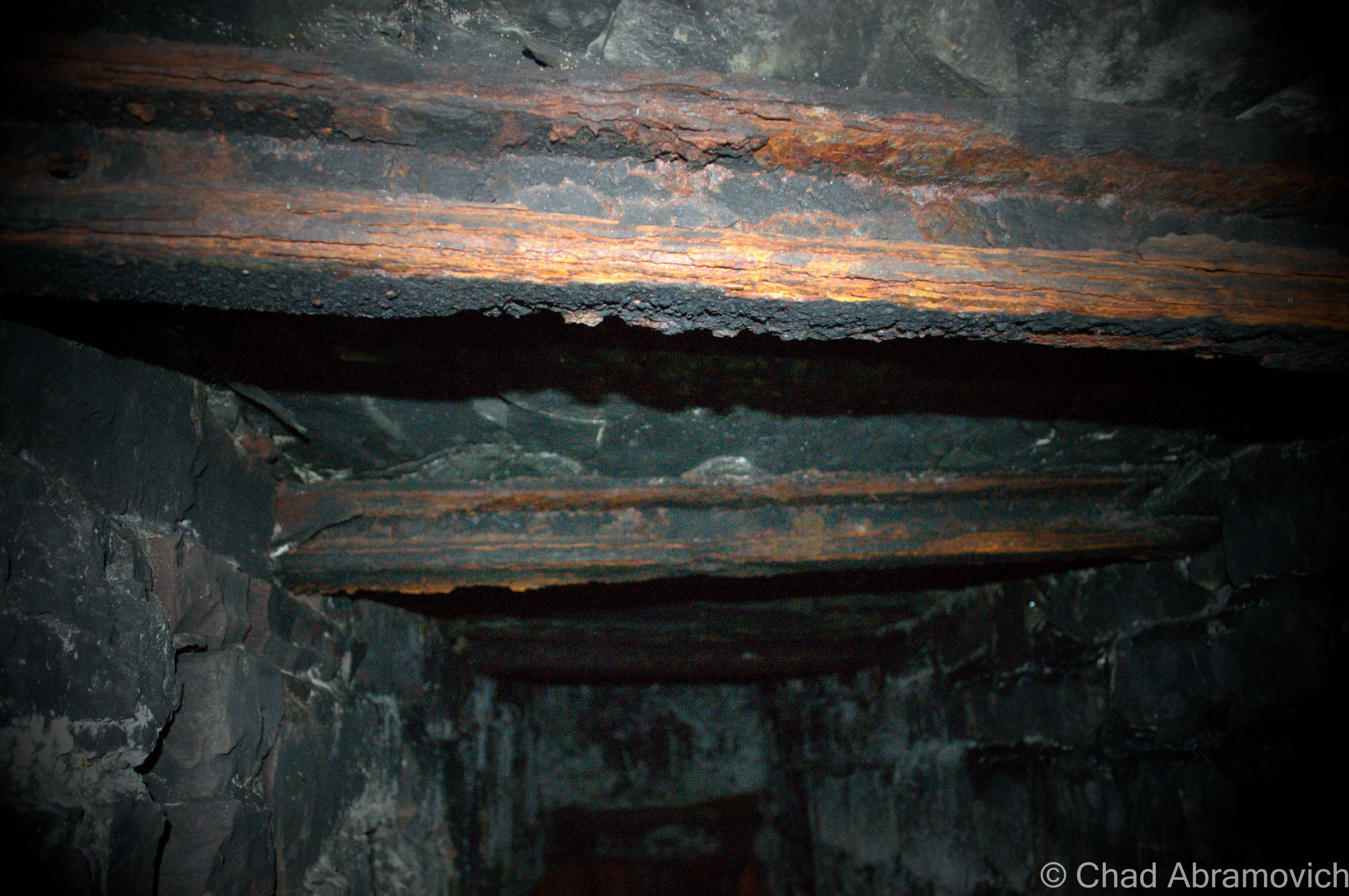
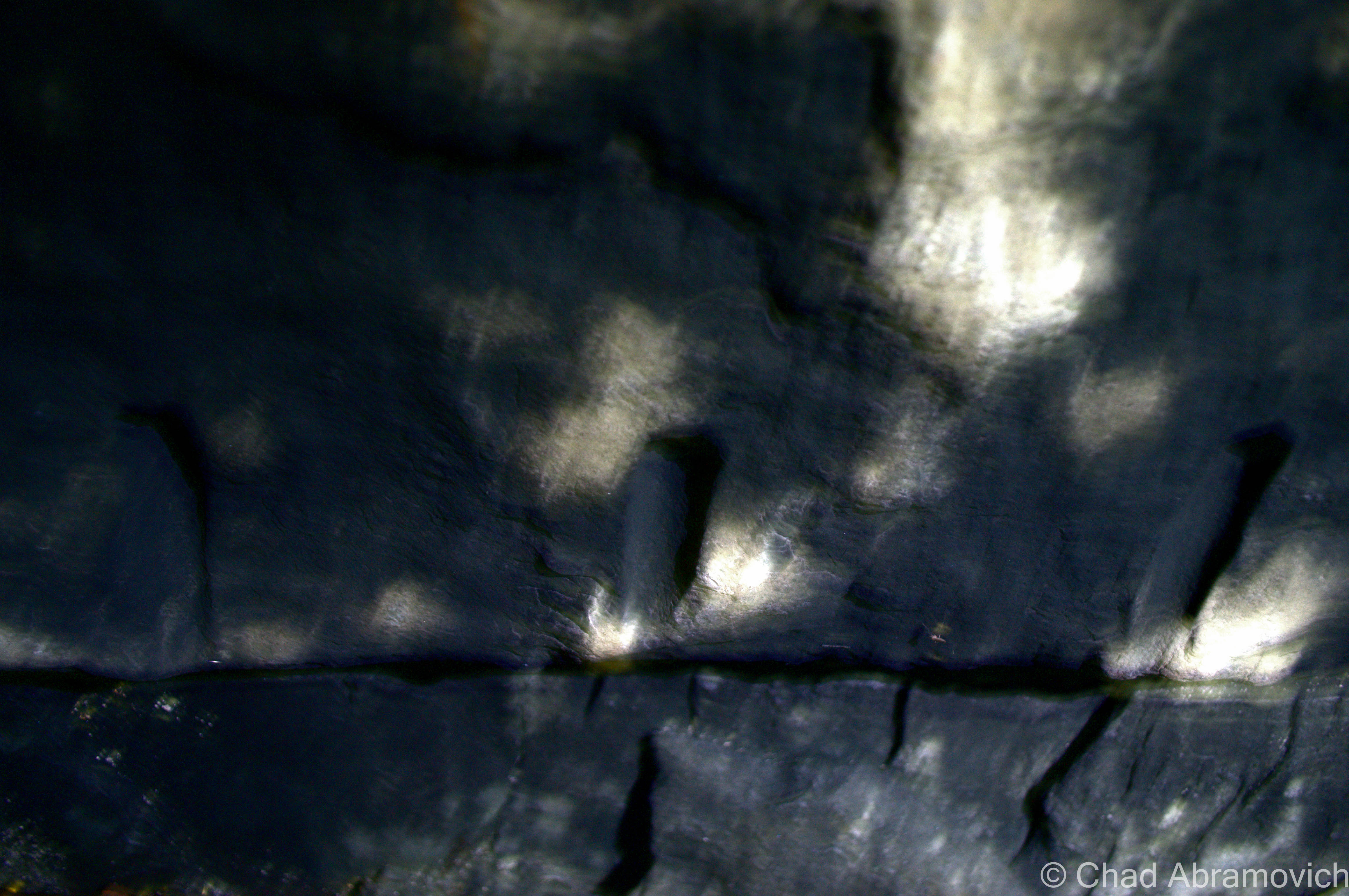
As I was inside, I recalled my friend telling me further about his adventure in this tunnel Years ago. On his expedition inside, he came across a peculiar find. He had ventured inside, and not long after, he noticed his flashlight beam illuminate a thick grey blanket that was hanging across the interior, which was most likely deliberately placed, creating the illusion that the tunnel was actually much shorter than it actually was. Carefully talking down the faux wall, it opened up another several feet of tunnel that rambled off into the dark, before finally ending again at a real stone wall. He guessed that a homeless person who wanted to keep curious visitors away from his home in the end of the tunnel, created the wall for a bit of anonymity and security.
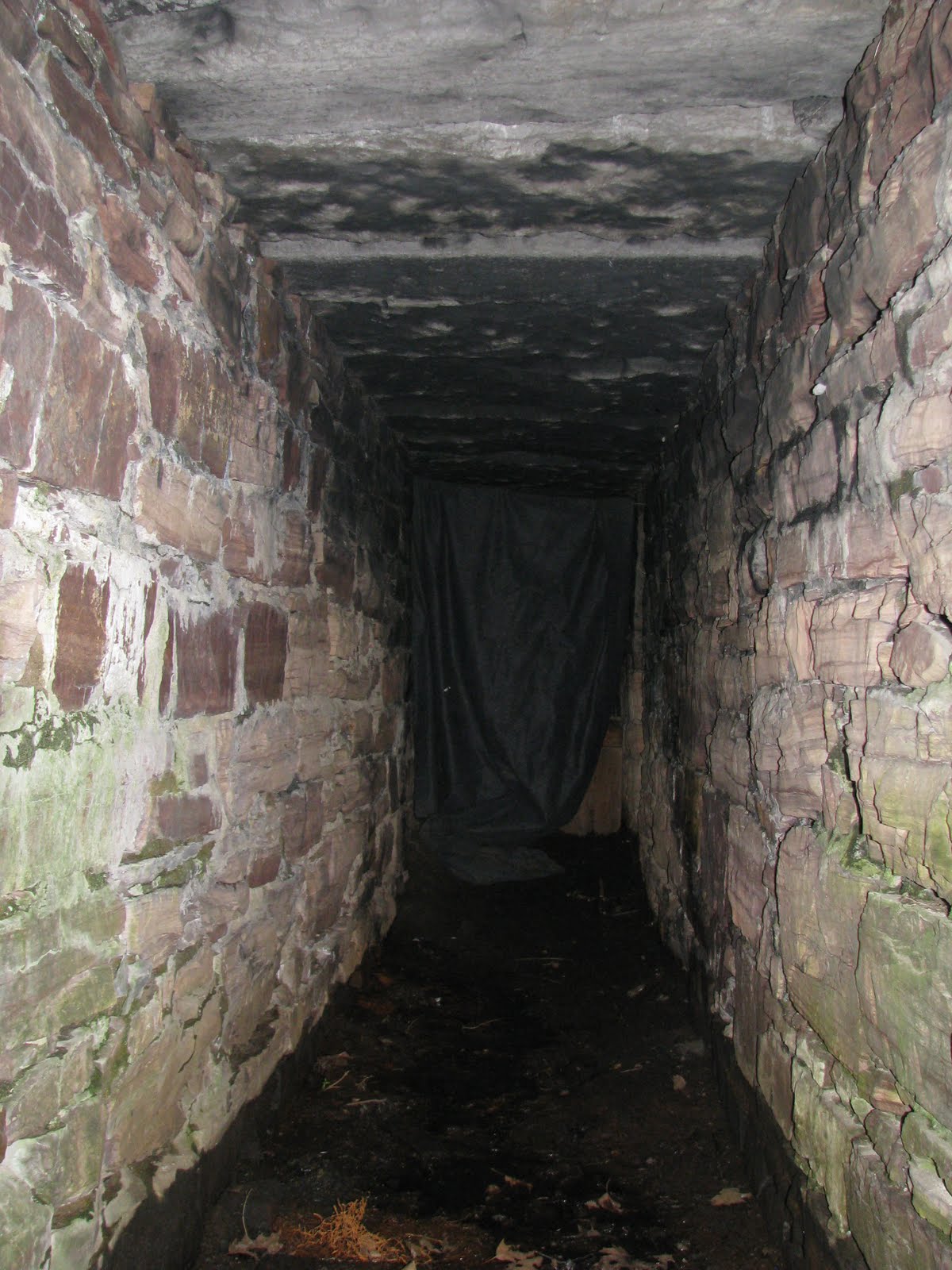
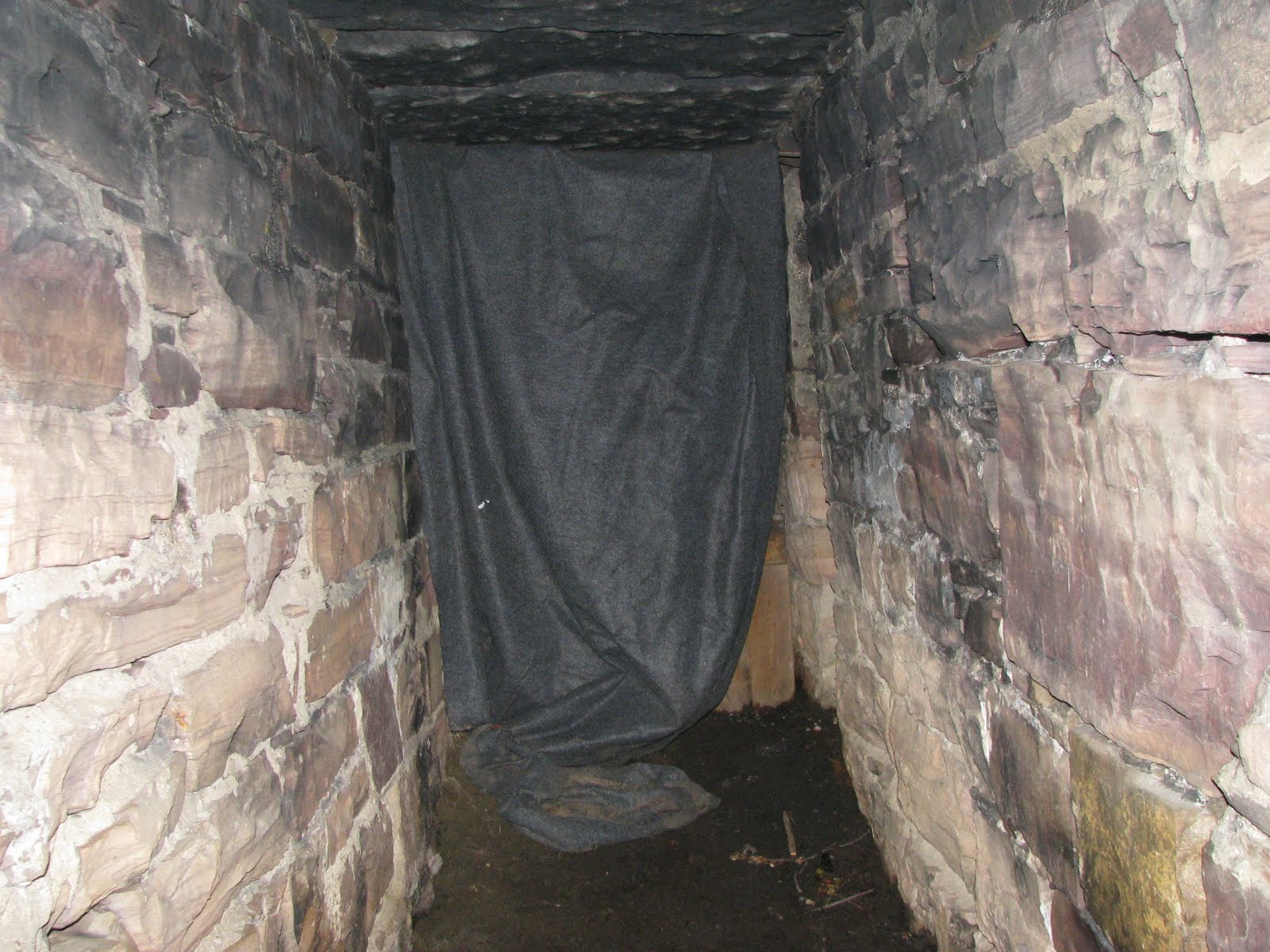
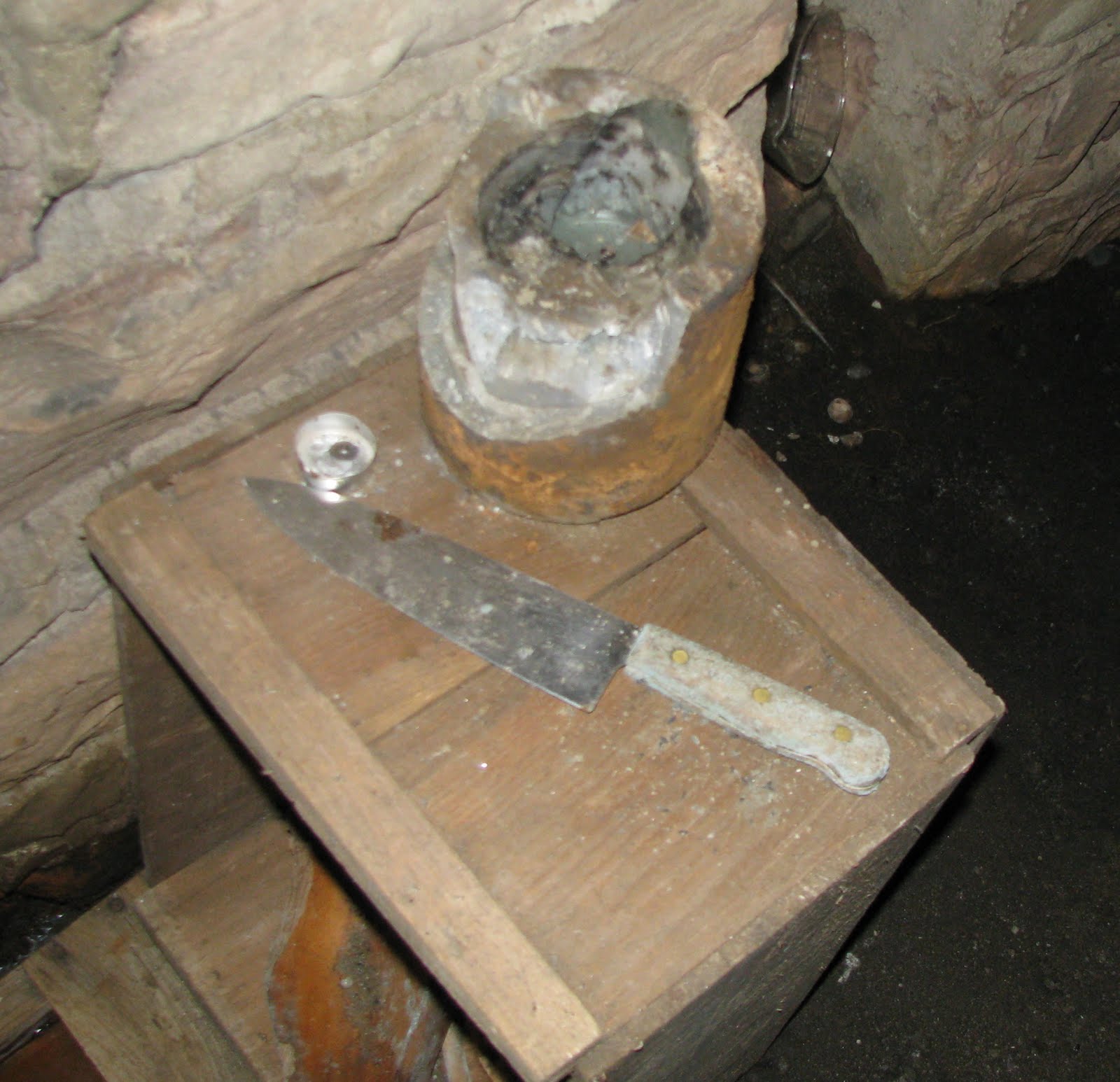
The reality of the mysterious order of people who frequent and possibly live the dank tunnel was a sobering reality, and only added to the deepening mystery. Another friend told me stories of him finding actual knives next to a makeshift bed – and told me to be cautious while exploring. So until some information takes form, or a developer decides to seal it up – the tunnel will continue to baffle curious visitors and harbor the fallen.
Disclaimer: You’ll notice I didn’t give away the location of the tunnel. That was intentional, in order to protect special and endangered locations like this one. So please, don’t ask.
—————————————————————————————————————————————–
To all of my amazing fans and supporters, I am truly grateful and humbled by all of the support and donations through out the years that have kept Obscure Vermont up and running.
As you all know I spend countless hours researching, writing, and traveling to produce and sustain this blog. Obscure Vermont is funded entirely on generous donations that you the wonderful viewers and supporters have made. Expenses range from internet fees to host the blog, to investing in research materials, to traveling expenses. Also, donations help keep me current with my photography gear, computer, and computer software so that I can deliver the best quality possible.
If you value, appreciate, and enjoy reading about my adventures please consider making a donation to my new Gofundme account or Paypal. Any donation would not only be greatly appreciated and help keep this blog going, it would also keep me doing what I love. Thank you!
Gofundme: https://www.gofundme.com/b5jp97d4


